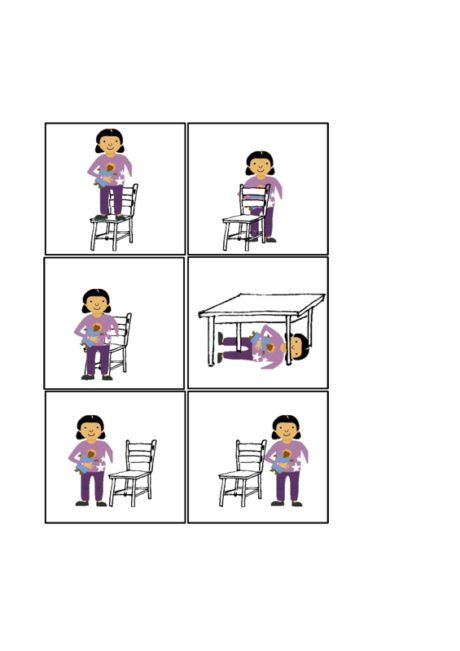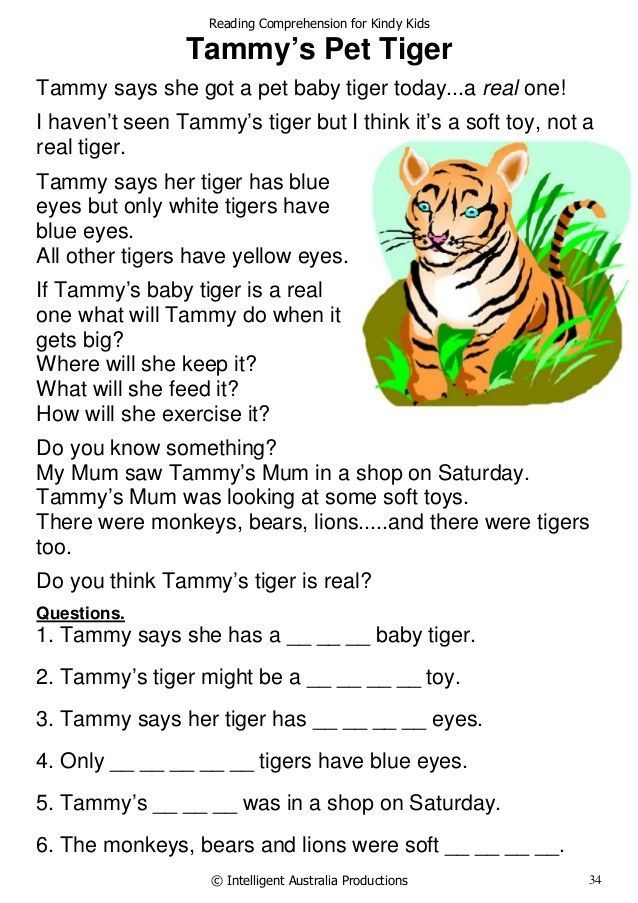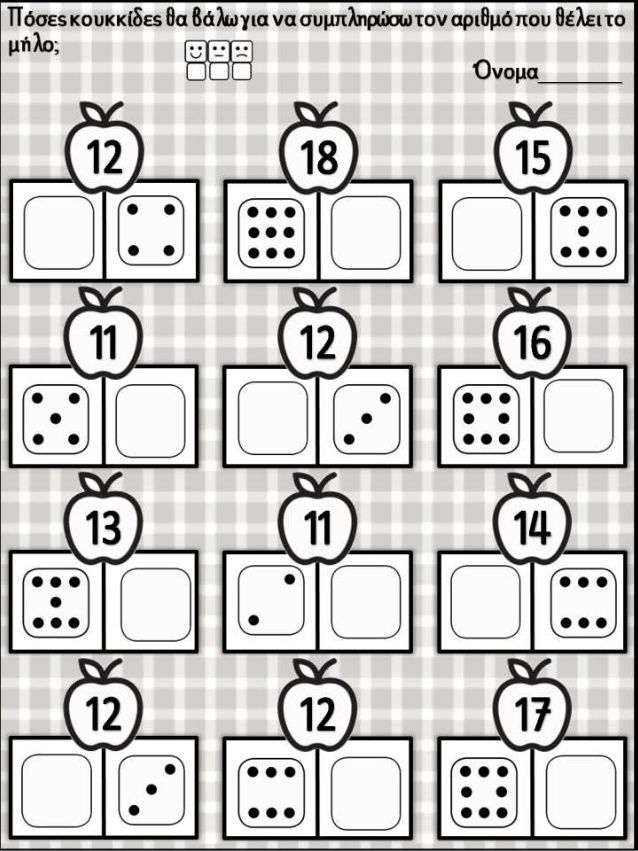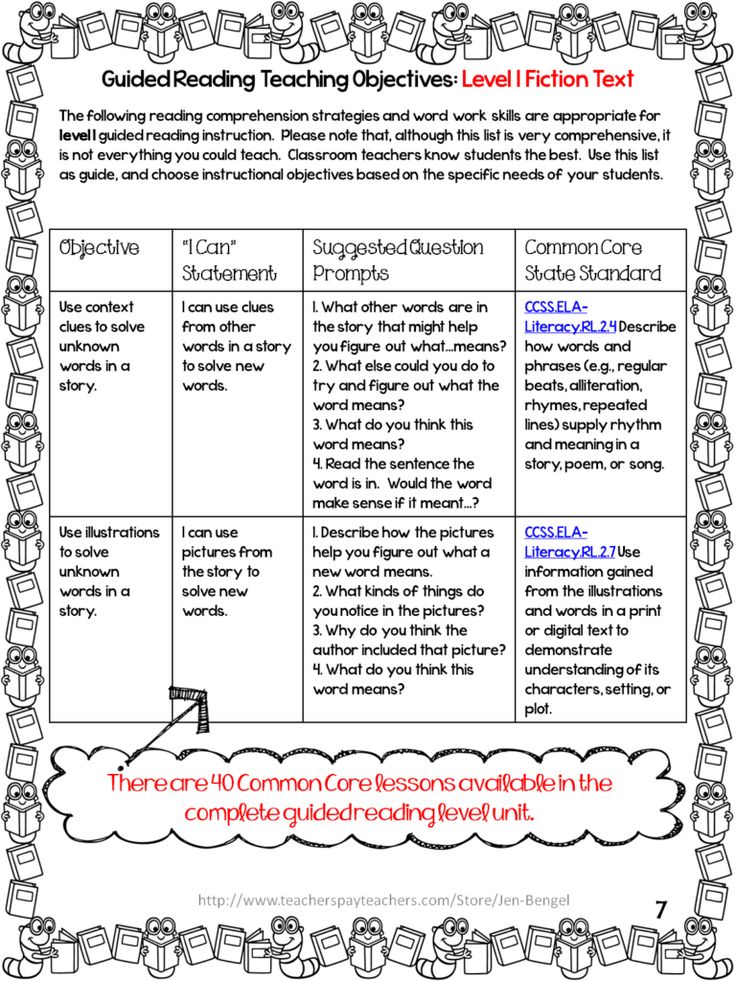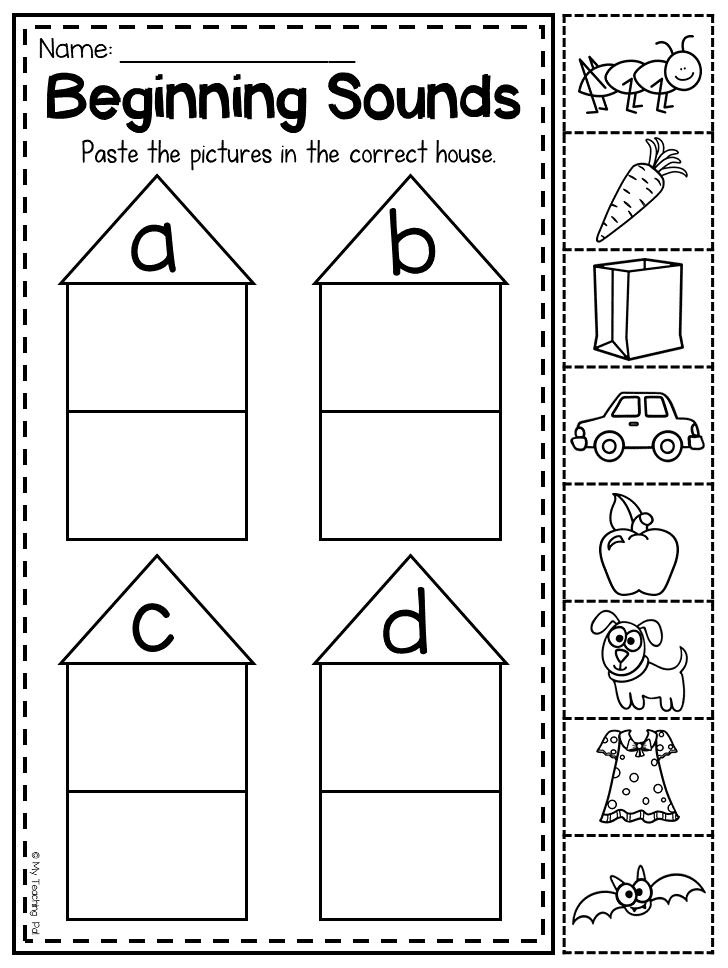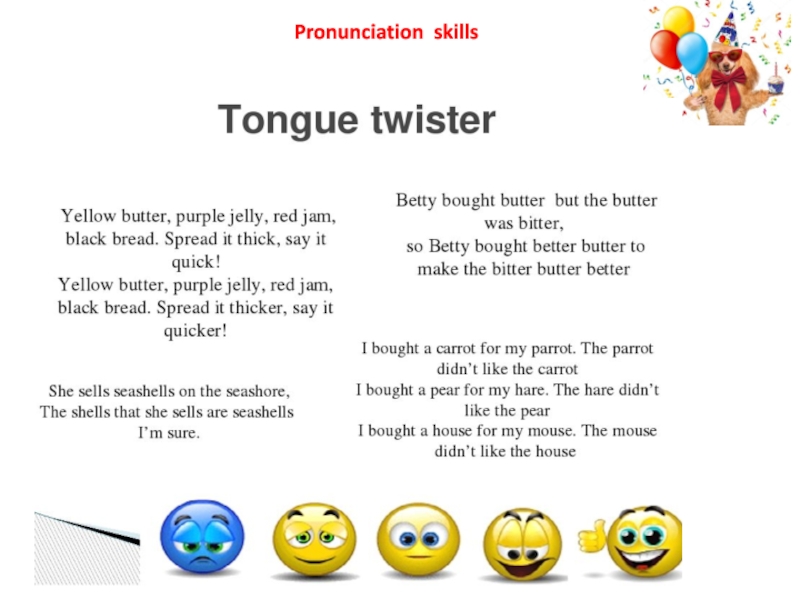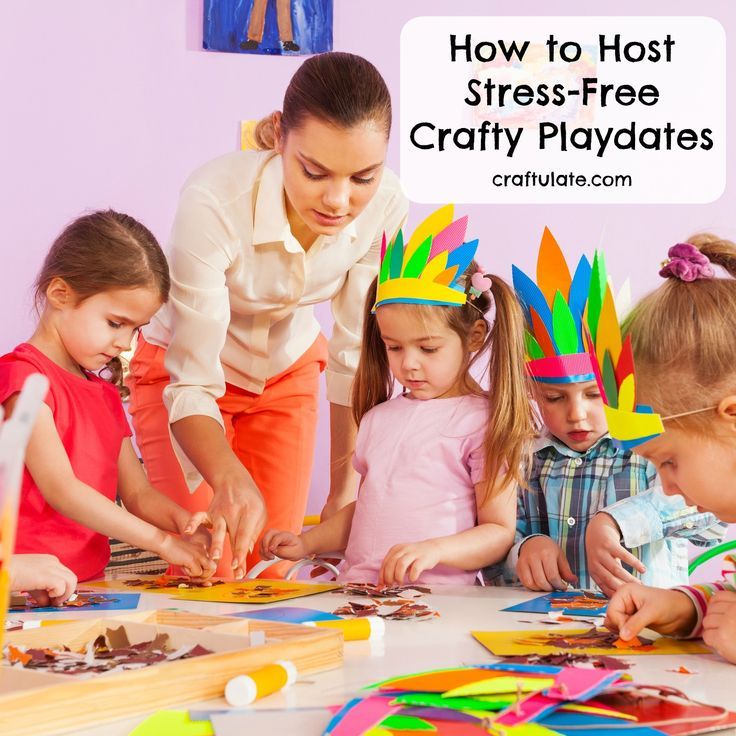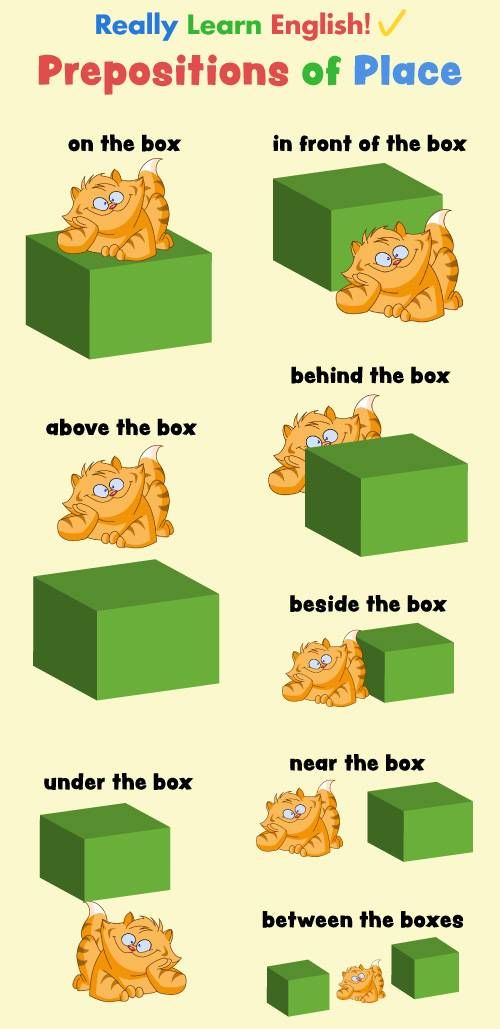Fun maths activities for preschoolers
Preschool Math Games and Activities to Engage Young Learners
Preschoolers have lots of important math skills to learn before they start kindergarten. Counting, number sense, sorting, patterns, comparing size, and so much more—these are all concepts toddlers need so they can move on to more advanced math concepts. These preschool math games and activities help kids master those skills in ways that are just as fun as playtime!
1. String beads on pipe cleaners
This is one of those classic preschool math games that has so many benefits for young learners. They get fine motor control practice along with learning to count, recognize numerals, and put numbers in order. All you need are pipe cleaners and beads.
Learn more: Laughing Kids Learn
2. Monster Dice Match
Rolling dice gives kids a chance to practice counting and subitizing. Get the printable for this free matching game at the link.
Learn more: The Measured Mom—Monster Dice
3.
You’ll find lots of dice-related preschool math games out there. In this one, kids roll the dice and then stack blocks together. They finish by counting the blocks all together, an early intro to addition.
ADVERTISEMENT
Learn more: Hands On as We Grow
4. Flip Uno cards to make a match
Get some memory practice while you learn numerals. Uno cards, with their bright and cheery colors and large numbers, are perfect for this, but regular playing cards work too.
Learn more: Primary Playground
5. Tag the number
We love that this game gives kids a chance to move! Tape up numbers on the wall (or write them on a whiteboard). Then have kids roll a die and run to tag the number that comes up. You can play this game in other ways too, like calling out the numbers randomly yourself, or taping the numbers in a variety of places around the room.
Learn more: This Reading Mama
6.
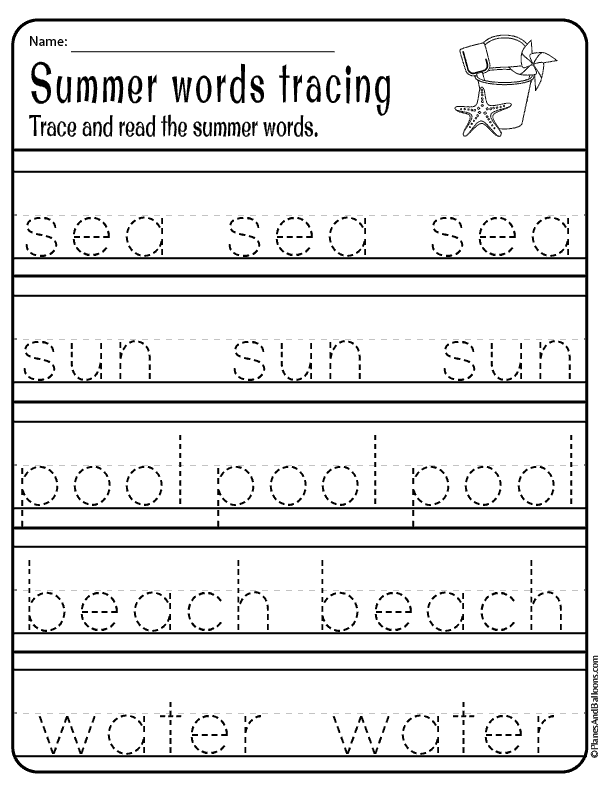 Build a city
Build a cityStack building blocks and build a city skyline. You’ll get a different result every time, making this one of those preschool math games kids can play again and again.
Learn more: Cinta + Co.
7. Race to fill the cup
So simple and so fun! Grab a bin of math cubes or small toys and some plastic cups. Kids roll a polyhedral die (you can also try flipping playing cards or Uno cards) and place that many items in their cup. The first to completely fill their cup wins!
Learn more: Frugal Fun for Boys and Girls—Fill the Cup
8. Hunt for numbers
Combine a sensory experience with some number practice. Fill a bin with sand, then bury playing cards for kids to find and match up.
Learn more: Busy Toddler/Number Hunt
9. Bounce a balloon
Everyone loves playing with balloons! Roll a die, then see if you can bounce a balloon into the air that many times without letting it hit the ground.
Learn more: Confidence Meets Parenting
10.
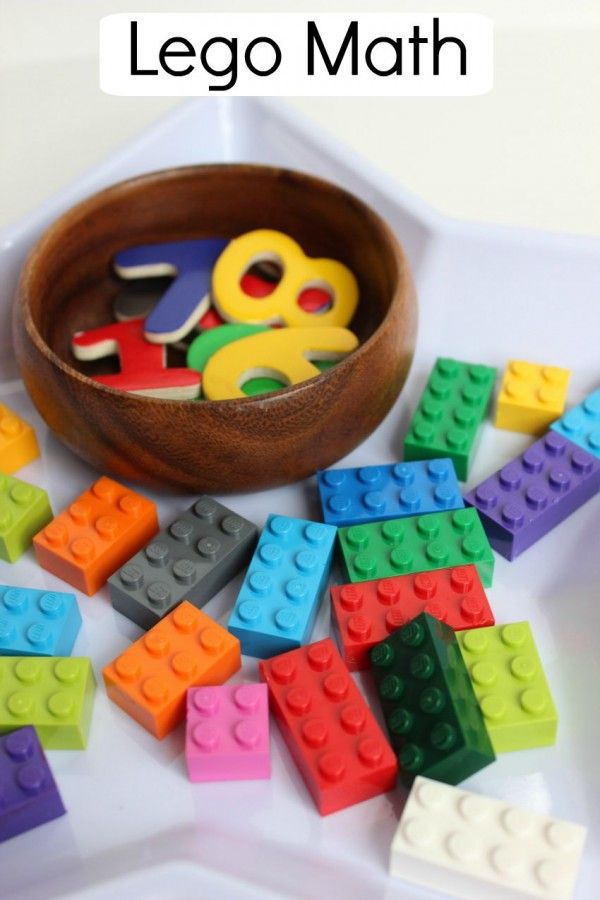 Build a beetle
Build a beetleThis is just like the original Cootie game, but no need to buy anything! Just cut beetle pieces from construction paper, then roll a die and see if you can be the first to assemble your bug!
Learn more: Teach Beside Me
11. Create shapes with sticks
Toddlers need to master their shapes, and this is a clever way to do it. Put together sets of wood craft sticks (use the same color for each shape) and let little fingers turn them into triangles, squares, and other shapes.
Learn more: Team Cartwright
12. Send bears into hibernation caves
Make “caves” from plastic bowls, then send little toy bears into “hibernation” in each one! Learn how the game works at the link.
Learn more: Pocket of Preschool
13. Park numbered cars
Vroom vroom! Number your toy cars to match the slots in a cardboard parking lot. Kids will have fun zooming them into the right places.
Learn more: B-Inspired Mama
14.
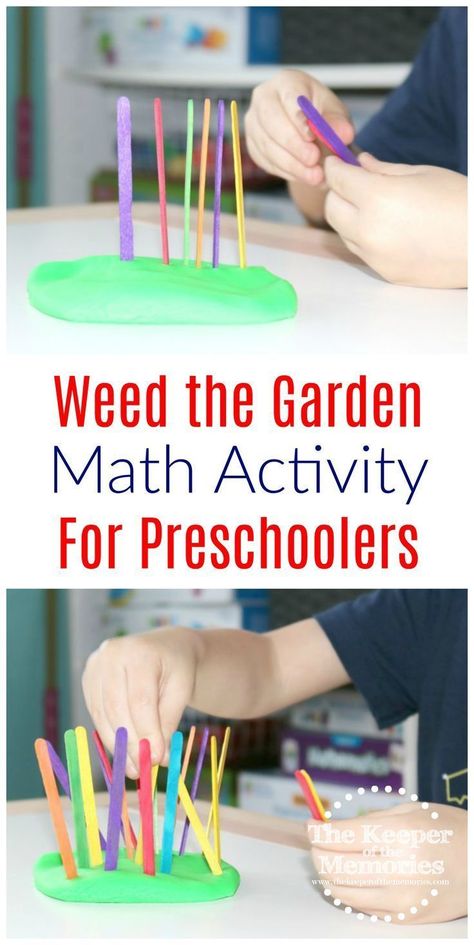 Line up dominoes
Line up dominoesDominoes are fantastic math learning tools. This game is a sneaky introduction to addition, as kids count up the total number of dots on each domino and put them in the proper place.
Learn more: Busy Toddler—Domino Line-Up
15. Copy ice tray patterns
Seeing and matching patterns is a key skill for preschoolers. Placing pom-poms into ice cube trays with plastic tweezers helps them work on fine motor skills too.
Learn more: Planning Playtime
16. Rubber Duck Math Race
In this game, kids race to see who can be the first to get their rubber duckies to 10 (or any number you choose). They roll a die and lay out tiles to move their duck. The twist? To get to 10 at the end, they must roll the exact number they need—no going over! Preschool math games like this help kids master counting to 10 and counting on.
Learn more: Happy Toddler Playtime—Rubber Duck Race
17. Feed the LEGO monster
Sort LEGO bricks by color, shape, or number of dots.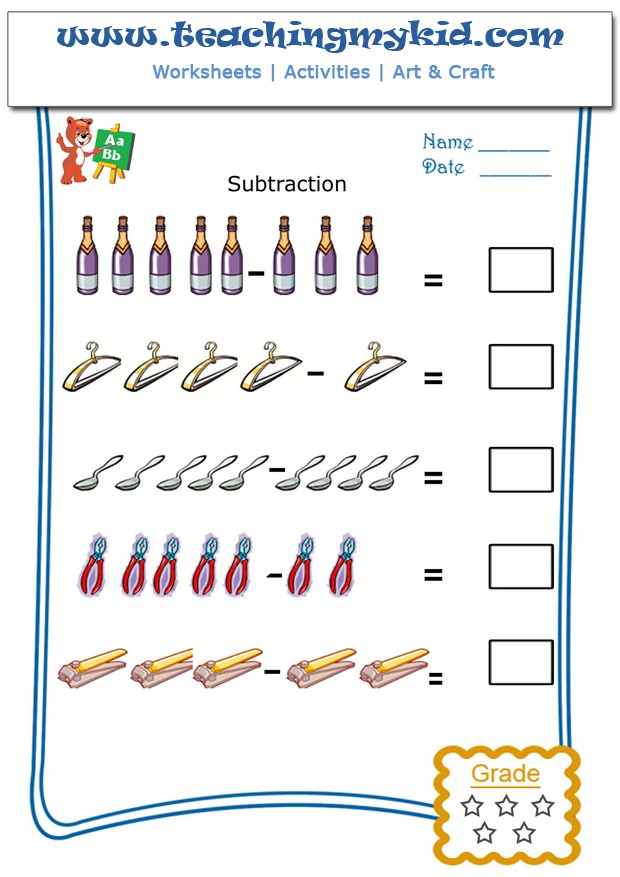 Then compare the number that wind up in each bag to learn the concept of “more or less.”
Then compare the number that wind up in each bag to learn the concept of “more or less.”
Learn more: Toddler Approved
18. Drop blocks into tubes
Upcycle some empty cardboard tubes by labeling them with numbers. Then drop small items like blocks or caps into the tubes to match the numbers.
Learn more: Happy Toddler Playtime—Tube Counting
19. Compare numbers to music
Prep for this game by using dot markers on paper plates as shown (visit the link below for more examples). Each kid takes a plate and uses it to “drive” around the room as you play music. When the music stops, they find a nearby partner and compare what they see on each other’s plates (e.g., “8 dots is more than 4 dots. 1 green dot is less than 4 green dots.”). Then start the music up and repeat!
20. Hold a shape scavenger hunt
Preschool math students are learning to recognize shapes in their environment and also to categorize and sort. This scavenger hunt does it all! Send them out to find objects in the room that match the shapes.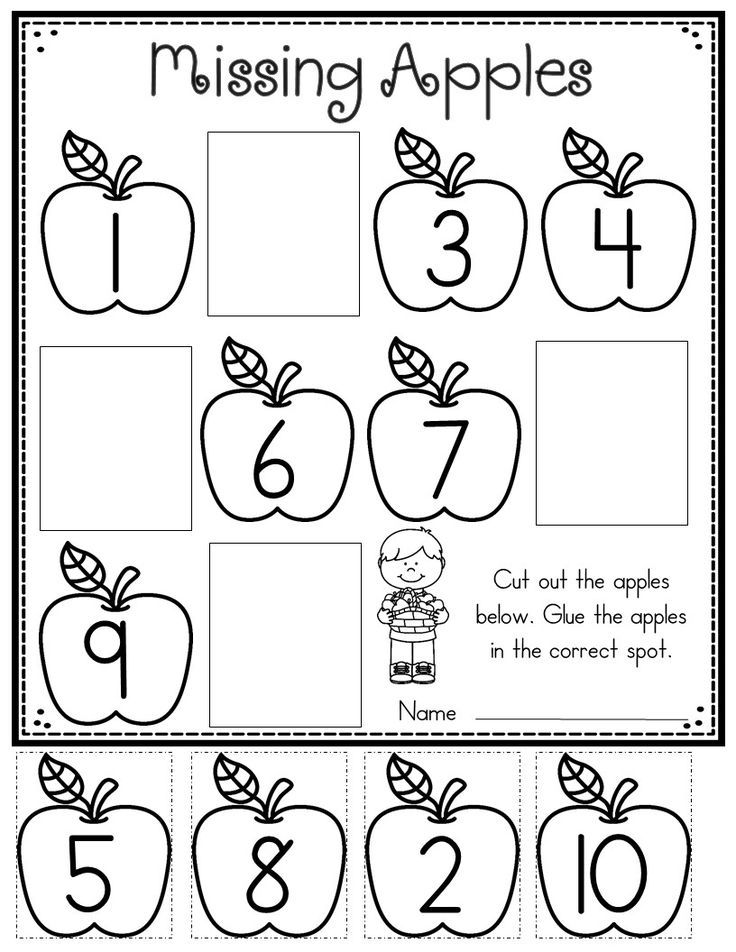 Then count and compare to see how many you have in each category.
Then count and compare to see how many you have in each category.
Learn more: Frugal Fun for Boys and Girls—Shape Scavenger Hunt
If you loved these preschool math games, be sure to check out 20 Simple and Fun Preschool Science Experiments and Activities.
Plus, get all the latest teaching tips and ideas when you sign up for our free newsletters!
Hands-On Math Activities for Preschoolers
Disclosure: This post contains affiliate links to Amazon. See my disclosure policy for details.
Math is so fun to teach to preschoolers because there are a lot of daily activities that incorporate math. Preschoolers don’t need worksheets for math…they should learn through play and hands-on activities.
1. Patterns with Bears
Counting Bears are a great math manipulative to use with preschoolers. You can sort, count, or use them with patterns.
I created some pattern cards to help with this. The first page is an AB pattern, meaning two colors alternate in the pattern.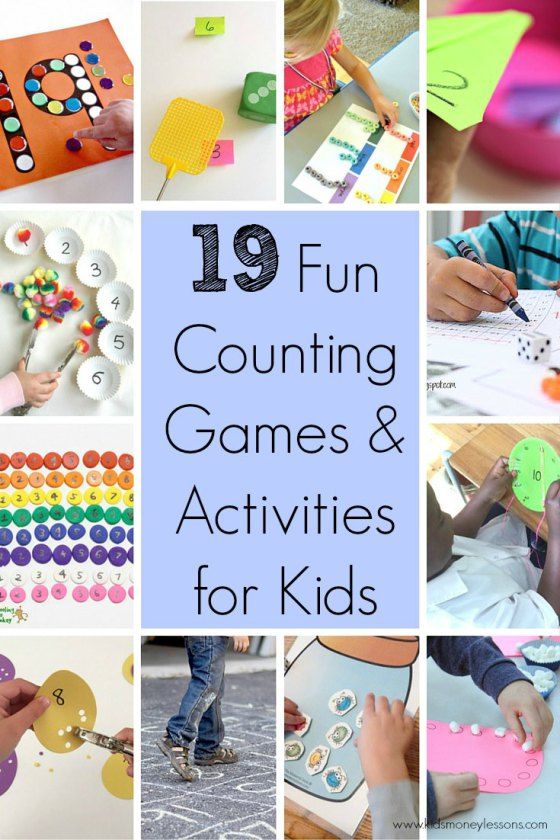 The second page is an ABC pattern, meaning three are three colors in the pattern. For this activity, your preschooler will set the colored bear on top of the matching color to create a pattern. On the ABC pattern cards, the last circle is left empty. That is for your child to tell you what color it should be.
The second page is an ABC pattern, meaning three are three colors in the pattern. For this activity, your preschooler will set the colored bear on top of the matching color to create a pattern. On the ABC pattern cards, the last circle is left empty. That is for your child to tell you what color it should be.
You can get the color patterns printable at the bottom of this post.
Math Skill: Patterns and Relationships
You can find more pattern activities here.
2. Sorting Colors with Bears
Sorting is a skill preschoolers should work on a lot. One way to sort is by color. We do this with our counting bears and a sorting mat.
You can get the sorting mat printable at the bottom of this post.
You can even use colored tape and pom poms to practice sorting! Add in some tweezers for some extra fine motor practice.
We also love counting mats! These are great for learning to count and working on one-to-one correspondence.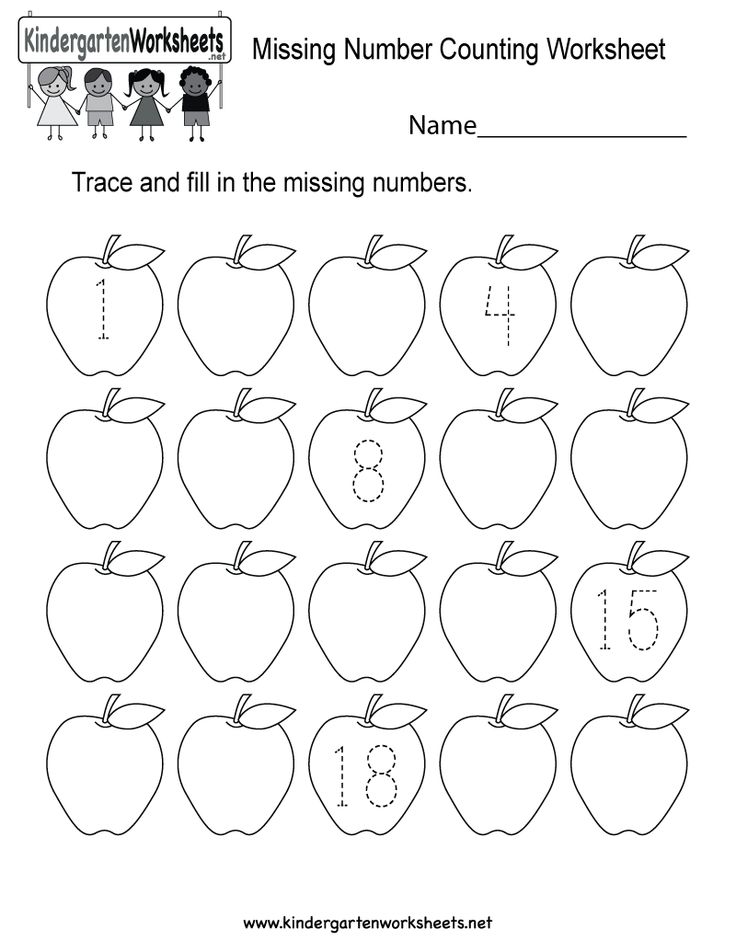
Math Skill: Patterns and Relationships
3. Money Muncher
A fun way to work on sorting is with the Money Muncher! It’s also a great activity for fine motor skills. To see all the fun details, click here.
Math Skill: Patterns and Relationships
4. Sorting Jelly Beans
Anytime we work with candy, my kids love it! You can sort M&Ms or jelly beans or whatever! To see how we did this with jelly beans, click here.
You can get the jelly bean sorting printable at the bottom of this post.
One more idea for sorting is by using toy animals. Have them sort by different characteristics, such as land animals and sea animals.
Math Skill: Patterns and Relationships
5. Graphing
Graphing is always good to introduce to preschoolers. It doesn’t have to be complex, but you can do a simple activity like graphing the types of transportation on a bar graph and use small pictures or toys (or I used erasers from The Dollar Tree).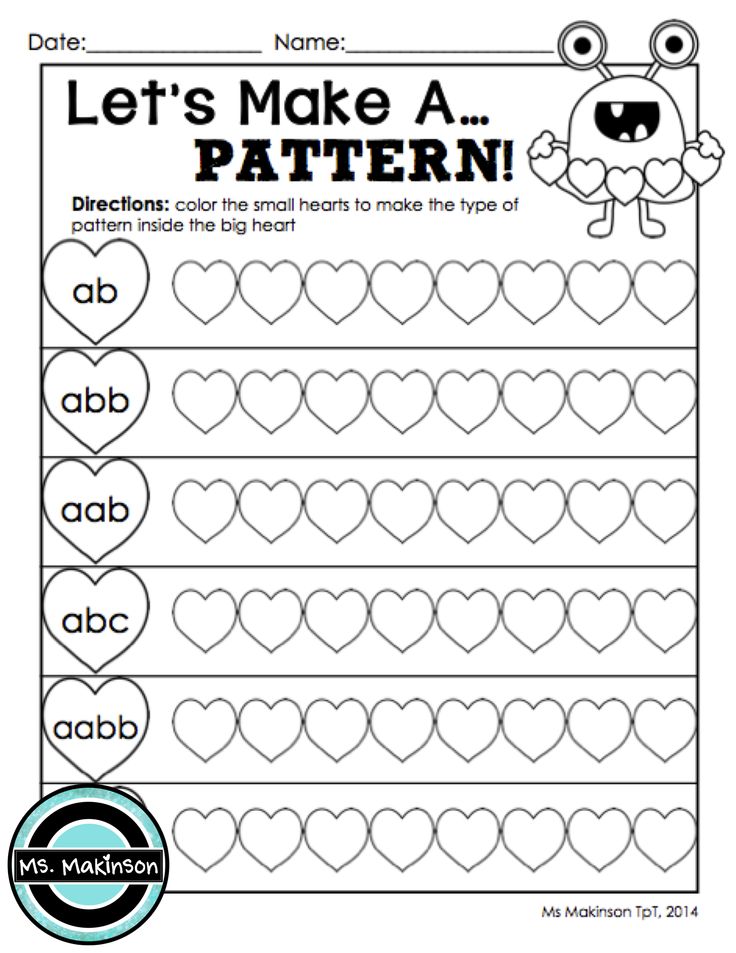
Make graphing hands-on using apples! Even young preschoolers can begin learning about graphing with this activity.
Check out this free gumball graphing activity right here.
Math Skill: Patterns and Relationships
6. Shape Wheel
This is a fun activity for learning shapes! Just print this shape wheel and draw the same colored shapes onto clothespins. Have your child match the clothespin to the shape on the wheel. This is great for working on fine motor skills!
You can get the shape wheel printable at the bottom of this post.
Math Skill: Geometry
7. Shape Sorter
An easy way to practice shapes is with a Shape Sorter! I bought these shapes at Michaels Craft Store many years ago, but these 3D geometric shapes would be a good option if you’re interested in creating a Shape Sorter. Check out this post for details on how to make this easy math activity.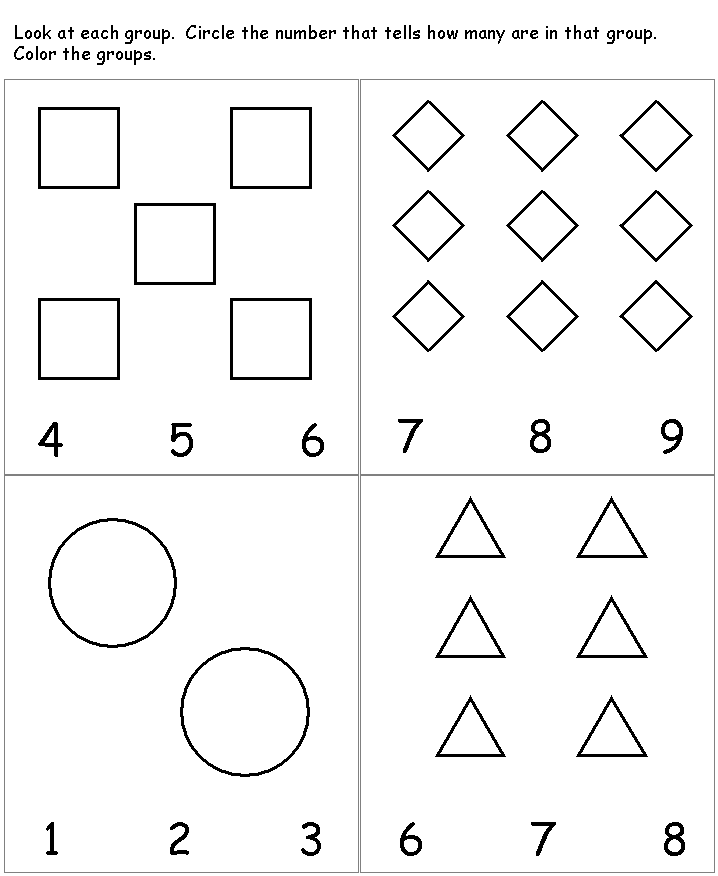
Math Skill: Geometry
8. Noodle Shape Cards
A neat sensory activity and a fun way to learn shapes are with noodles! See the post here to download the free shape cards.
Math Skill: Geometry
9. Foam Sticks
Learn shapes in the tub with these foam sticks! You can see how we did this here.
Another fun way to practice shapes is with the cookie shapes matching activity!
And my favorite way to teach about shapes is with my shape rhymes!
10. Dice Game
This is a really fun game! I took this Melissa & Doug wooden toy and put white circle stickers on the top of the pegs. I wrote numbers 1-6 and had 2 stars. I had my son roll the dice and whatever number it landed on, he would pound with a toy hammer. If the number he rolled was already down, he hit the star. Not only was this fun for him, but he was able to “subitize”, which simply means to recognize numbers instantly without counting the dots.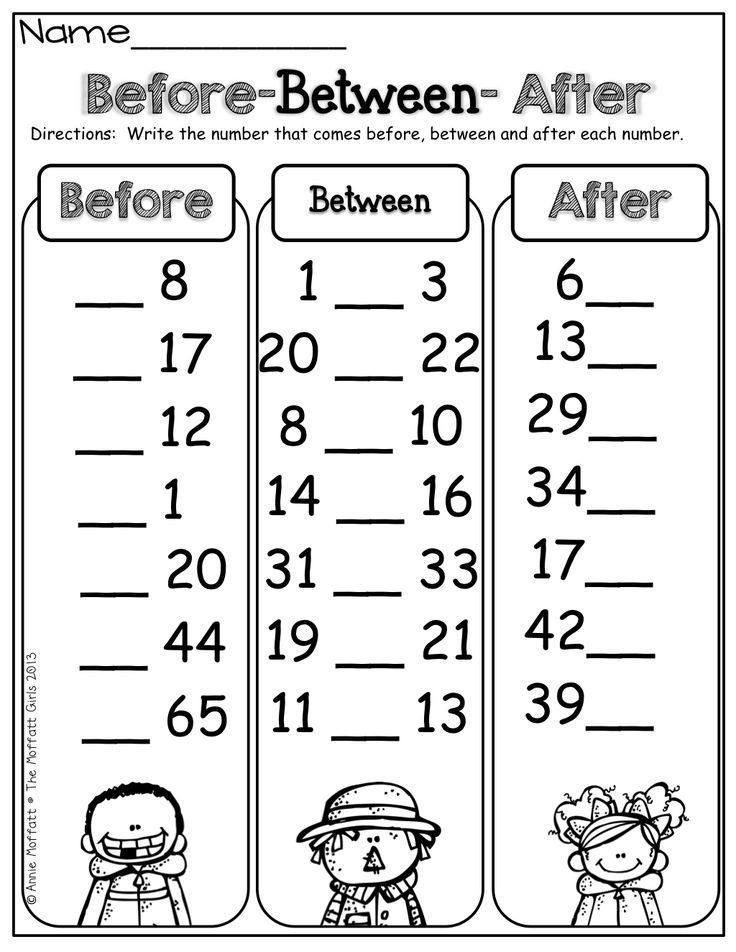
Math Skill: Number Concepts
11. Star Number Cards
Practice counting and recognizing numbers with star number cards. This one is great for working on one-to-one correspondence and fine motor skills.
You can get the star number printable cards at the bottom of this post.
Math Skill: Number Concepts
12. Ladybug Math
We made these adorable ladybugs and they were a hit! Not only were they fun to play with, but we did a lot of counting and sorting with them. Read all about it here.
Math Skill: Number Concepts
13. Balloons
Learn the order of numbers with this really fun game involving balloons! Check out the details here.
Math Skill: Number Concepts
14. Estimating with Water
We learned about estimation with a dropper with some fun, hands-on water activities.
Math Skill: Measurement
15.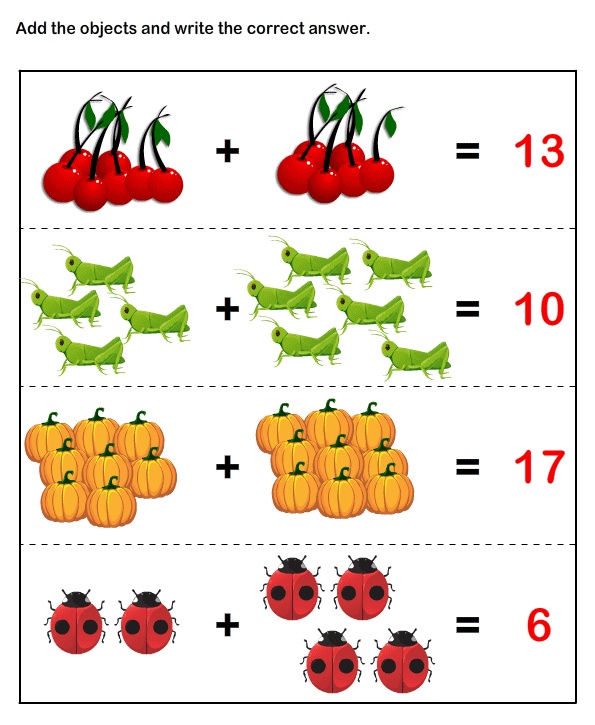 Pouring and Comparing
Pouring and Comparing
We practiced pouring skills with rice into these beakers. Then I had my son line them up from biggest to smallest. Using comparative words like big/small or empty/full help teach preschoolers about simple concepts of measurement. This is simple and you could elaborate on this activity.
One more easy way to practice measurement is with Unifix cubes. Place different lengths of tape on the floor or poster board. Then have your child use Unifix cubes to measure the lines. This is a simple way to practice counting, measuring, and comparing lengths.
Math Skill: Measurement
Lastly, check out this really easy and fun way to practice counting!
If you’re looking for digital math activities, make sure to check out my counting activities using Google Slides.
If you’d like to download the 5 free printables I shared in this blog post, just click on the button below!
90,000 entertaining mathematics for preschoolers, mathematical games and tasks onlineHome -forces of captivity
Mathematics
Course We study figures
View all
We study the figures (1)
Study figures (2)
We study the figures (3)
Studying figures (4)
Distinguishing figures (1)
Distinguishing figures (2)
Distinguishing figures (3)
Distinguishing figures (4)
Correlating a figure with an object (1)
View all
Course Learn numbers
View all
Number 1 (1)
Distinguish numbers from 0 to 9 (1)
Distinguish numbers from 0 to 9 (2)
Distinguish numbers from 9 (3)
Distinguish digits from 0 to 9 (4)
Number line up to 10 (1)
Digit 1 (2)
Digit 2 (1)
Digit 2 (2)
View allCount up to 5
View all
Funny Numbers (1)
Funny numbers (2)
Funny count up to 3
Funny count up to 5
Where else? (1)
Where is more? (2)
Let's count!
Remove the numbers up to 3
We play and consider
View all
Consider up to 10
View all
Funny score up to 10 (1)
Funny score up to 10 (2)
Tasks to a numerical line up to 10 (1)
Number line problems up to 10 (2)
Play and count (1)
Play and count (2)
Which is in order up to 10?
Count down from 10 to 1 (1)
Count down from 10 to 1 (2)
View all
Count up to 20
View all order up to 20 (1)
Correlating objects and numbers up to 20 (1)
Composition of the number 12
Counting in pairs up to 20 (1)
Counting objects up to 20
Count items up to 20 (2)
Count items up to 20 (3)
Count items up to 20 (4)
View all
Count up to 100
View all
Estimated score
count like
Units of length. Millimeter
Millimeter
Approximate count (1)
Put in order to 100 (1)
Count to one hundred
View all
Composition of the number
View all 9Ol000
Add and subtract
View all
Learn to solve problems up to 10 (1)
Learn to solve problems up to 10 (2)
Examples in pictures
Subtract and add
Subtraction by tens (2)
Subtraction by tens (3)
Drag answer
Addition. Terms. Sum. (1)
Addition. Terms. Sum. (2)
View all
Compare numbers
View all
Longer, shorter, equal in length
Comparing numbers in pictures up to 10
Odd or even
Comparing expressions. Equalities and inequalities
Comparison of numbers within a million 9Ol000
Dividing a three-digit number by a single digit
Multiplication and division problems
Do you know the multiplication table? (1)
Do you know the multiplication table? (2)
written division with the remainder of
written multiplication by a two -digit number
View all
Solve problems and examples
View all
Learning to solve problems up to 10 (1)
Money accounts are loved by
diagrams 9000,
Consignment verification by adding subtraction
Multiplication and division problems
Examples with brackets
Add and subtract
Composition of a number
Composition of a number
See all
We determine the time
View all
days of the week (1)
days of the week (2)
We remember the months (2)
Distinguish the seasons
Make months (1)
Determine the time by shooters
hours with arrows
Autumn riddles (1)
Seasons - spring (2)
View all
Why do we need mathematics?
Mathematics is a fundamental science that appeared at the moment when a person needed to calculate something.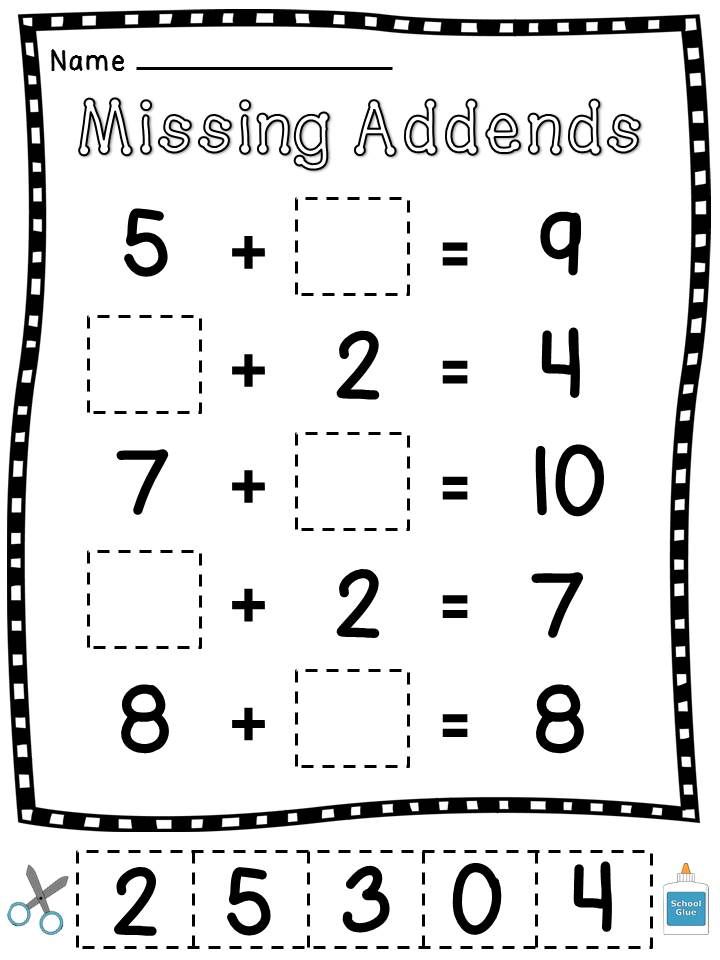 We can say that her age is not much different from the age of mankind. Mathematics helps, on the one hand, to develop abstract thinking, on the other hand, to solve applied problems in everyday life.
We can say that her age is not much different from the age of mankind. Mathematics helps, on the one hand, to develop abstract thinking, on the other hand, to solve applied problems in everyday life.
Mathematical thinking, or mathematical mindset, is based on logic, the ability to build cause-and-effect relationships, critical thinking, the desire to get to the bottom of a question or problem.
Mathematics forms skills that are relevant for any historical period, especially for the present.
What is entertaining mathematics?
Undoubtedly, mathematical abilities are developed by special efforts.
One option is to study mathematics by solving mathematical problems. For an easier and more exciting learning process, a special section is used - entertaining mathematics. In thoughtful game tasks, interesting plots, using humor, the science of mathematics appears in the most attractive form, which is especially important when teaching children.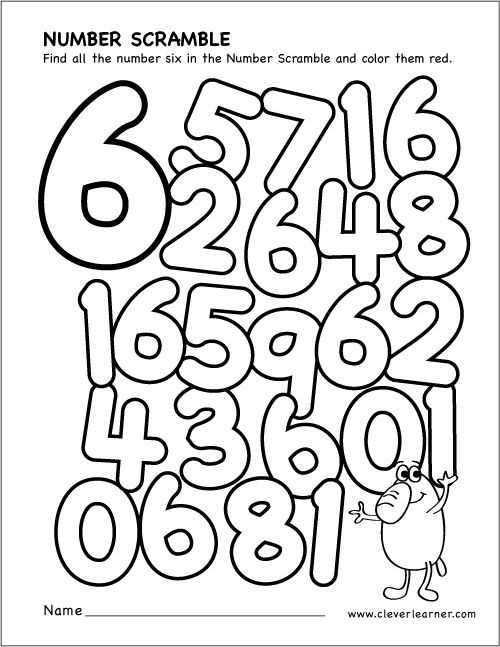 Children's curiosity and excitement allow you to get involved in the world of abstract calculations and go from entertaining puzzles to real complex mathematics.
Children's curiosity and excitement allow you to get involved in the world of abstract calculations and go from entertaining puzzles to real complex mathematics.
Why does the child not understand mathematics?
There is no definite answer to this question. Perhaps the child has not yet fully mastered the skills of counting. Here, counting games from very simple to complicated options, for example, with dice (as an option, rpg board games) will help.
Very young children may still have unformed abstract thinking: it is easier for them to operate with visual objects. A parent or teacher always shows the application of mathematics, explaining why mathematics is needed in life.
If we are talking about an older age, then it is possible to structure abstract thinking in the form of diagrams on paper, helping not to keep all the data in mind, but to see the full picture visually.
If mathematics is difficult for a child, it may be worth paying additional attention to the development of imagination.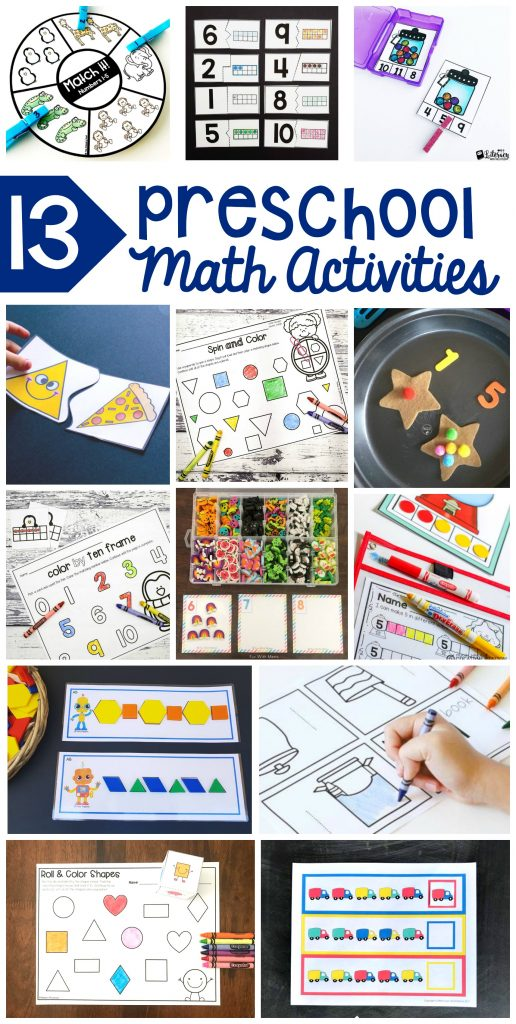 It is not necessary to use the detailed solution of math problems; you can go through mazes, cut out patterns, collect various crafts according to the schemes. Creativity is welcome, because mathematics is not always about dry numbers.
It is not necessary to use the detailed solution of math problems; you can go through mazes, cut out patterns, collect various crafts according to the schemes. Creativity is welcome, because mathematics is not always about dry numbers.
Math in pictures for preschoolers online is now available to every child. The section includes tasks and games in arithmetic for children, exciting tasks that develop addition and subtraction lessons for children. The exercises in this section will help develop attention and concentration, form elementary mathematical concepts in children.
Playful activities
Your child will have a fun and productive time.
Children are engaged with pleasure, are completely immersed in the learning process and achieve results. For children under 6 who have not yet learned to read, we voiced each task.
Cups and medals for children
Awards that motivate children to achieve success.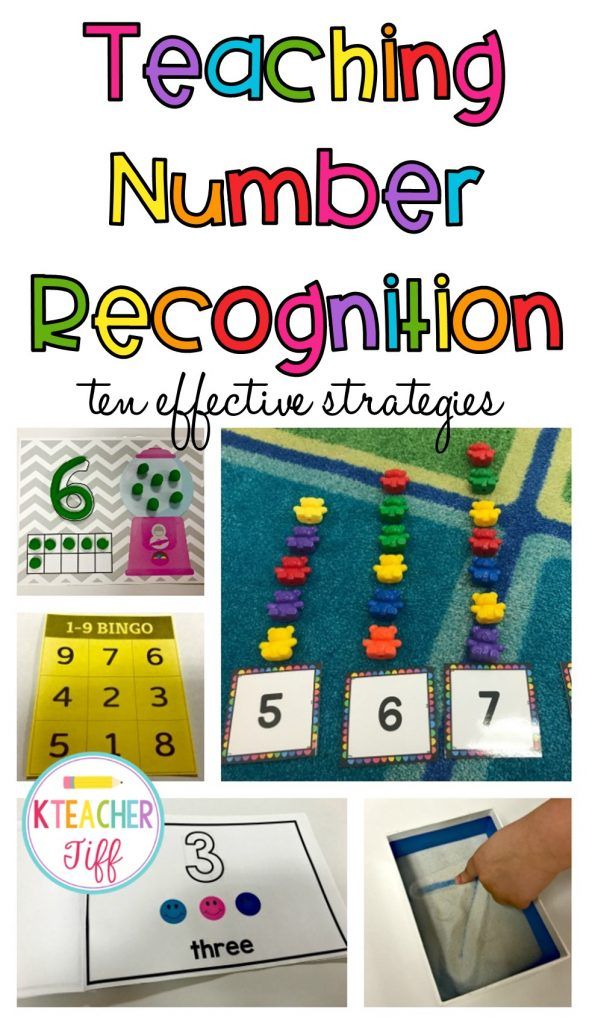
Each child has his own “hall of awards and achievements”. If the tasks are completed correctly, children receive cups, medals and nominal diplomas. The awards can be shared on social networks, and the diploma can be printed.
Personal training
Fully controlled development of the child.
We save all the successes of the child and show you what you should pay special attention to. Make up your own training programs so that the child develops harmoniously in all the right directions.
Start studying with your child
today - it's free
Register and get 20 tasks for free. To remove restrictions and achieve great results in your studies - choose and pay for the tariff plan that suits you.
Register orChoose a tariff
Entertaining mathematics for preschoolers - ABC of education
Table of contents- How to introduce a child to logic?
- How to remember the graphic representation of numbers?
- Preschool Math & Counting
- Preschool Math & Counting
- Toddler Play Activities 5 to 5 (2yrs 6m)
- Counting in everyday life (1 year 6 months)
- Flashcards (1 year 6 months)
- Learning zero (2 years)
- Counting using poetry (1 year 6 months)
- Math for kids in the game
- Bears go for a walk
- Find a house for each bear
- Looking for a toy
- Looking for a toy 2
- Count, don't make a mistake!
- Find a toy
- Getting to know the numbers
- Guessing game
- Who has more
- Logic problems for preschoolers
- Learning to tell time by the clock
- Mosaic of buttons - an educational game for children
- Why buttons?
- In no case should you count, just name four.
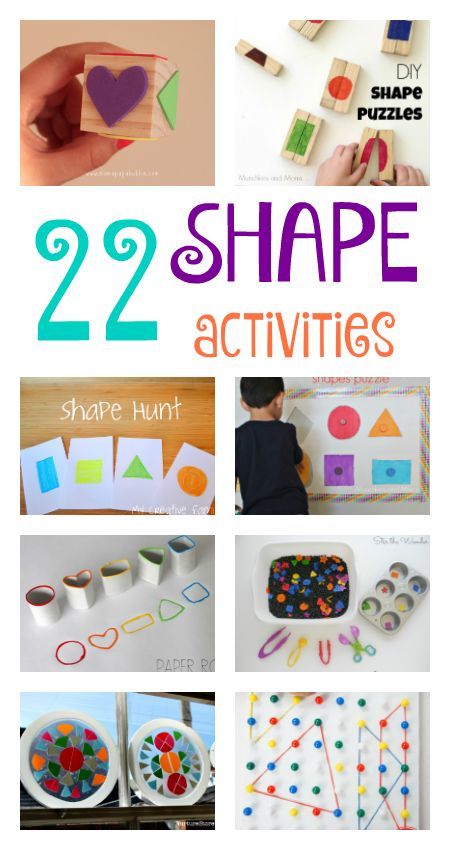
How to teach a child to count and love mathematics? What can be done to facilitate the process of learning the world of mathematics? It's not as difficult as it might seem. It is only necessary to methodically deal with this and create all the conditions for the baby.
Before you begin to work with your baby, read a few tips:
- A small child cannot maintain the same position for a long time, perform the same action. Therefore, there is no need to get angry if your baby is distracted, slides from a chair to the floor, or suddenly asks a question completely “from a different opera”.
- If you use some kind of visual material in your classes - cards, pictures, toys, then introduce the child to all this in advance. This is done so that during the lesson the baby is not distracted from studying by looking at new things for him.
- Most likely you will work with your baby on some book. Do not try to “pass” it quickly and be sure to return to the past from time to time.
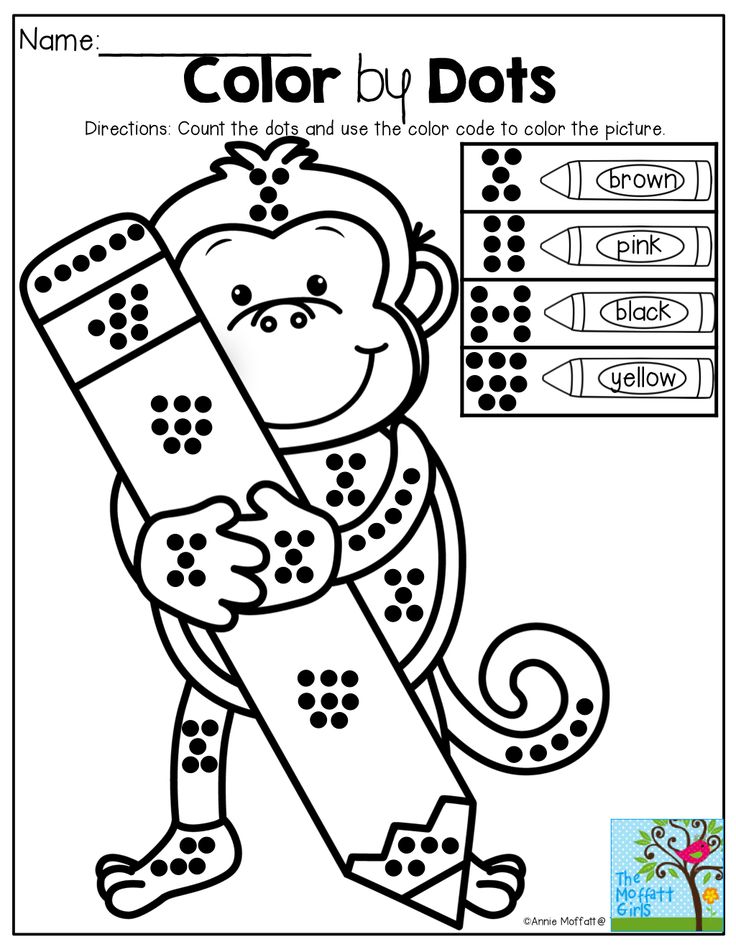 The memory of babies is still very unstable.
The memory of babies is still very unstable. - Young children are much better at assimilating emotionally perceived material. Therefore, use more games, counting rhymes and rhymes.
- For classes you will need counting material. As such, you can use large buttons, toys from Kindersurprise, parts from Lego. You will also need picture cards. You can use stickers for this.
How to introduce a child to logic?
You have a child, and you are beside yourself with surging happiness only from the realization that you have now become a happy mother and, finally, there will be someone to pass on your maternal love and knowledge. Not without reason, from time immemorial, all the leading philosophers have emphasized in every possible way that when parents want to raise their child in the image and likeness, hard or soft, they voluntarily or involuntarily want their baby to look like themselves. This process is called education.
Leading psychologists unanimously assure us that the kindness and breadth of your child's soul, voluntarily or involuntarily, should help in achieving his goals.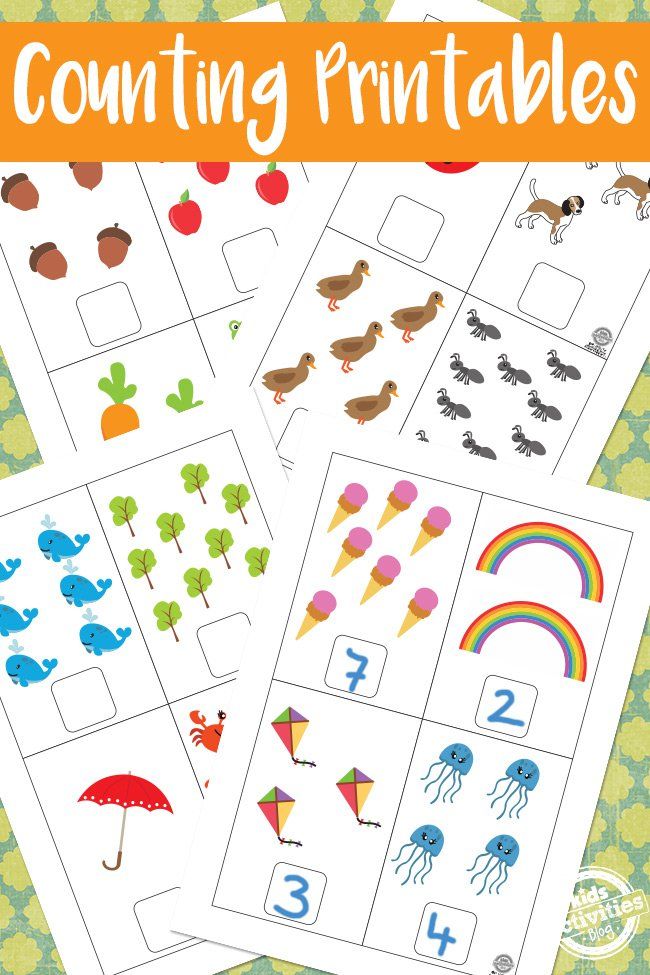 Indeed, it is easier to be kind than smart. It is not for nothing that people say that a kind person helps everyone, while a smart one helps only those in need. And if you want to see your child not only kind, but also smart, then you need to start the whole process of education from infancy. But where do you start?
Indeed, it is easier to be kind than smart. It is not for nothing that people say that a kind person helps everyone, while a smart one helps only those in need. And if you want to see your child not only kind, but also smart, then you need to start the whole process of education from infancy. But where do you start?
Start small. From logic. In order for your child to believe in the existence of cause and effect, you must always and must fulfill your parental promises (for example, “if you behave, then we will definitely go to the zoo.”)
If your child is already seriously interested in children's books, then it will be useful to add verbal logic puzzles and tasks with answers, such as: “If this is so, then this is because ...” or “What will happen if I do everything the other way around?” “How can all this be explained?” The development of logic is helped by simple children's riddles, puzzles, rebuses. Make it a rule to have a mystery night at least once a week. Teach your child to make puzzles.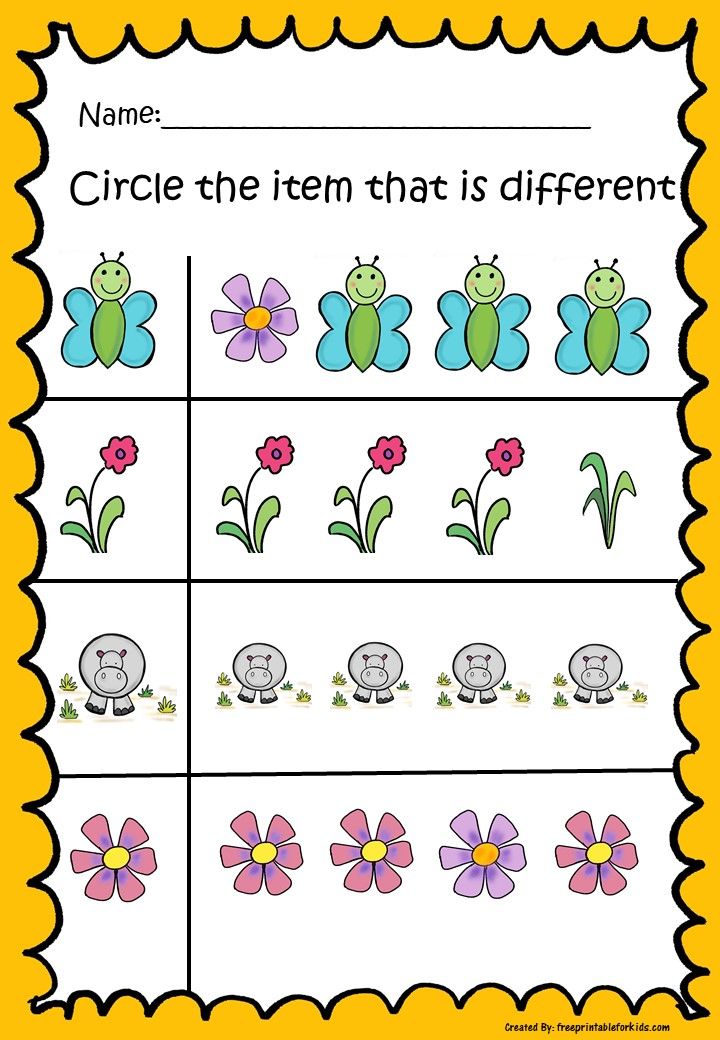
Your child is entering a stage when everything becomes extremely interesting for him and his curiosity can and should be played on so that he can quickly learn and, most importantly, understand the world around him. And simple worldly logic will only be to his advantage.
To make it easier for your child to understand and understand all this, it will be useful to include in role-playing games some elements of ready-made conclusions, such as: “Your dolls go to bed in the evening because they get tired during the day. But my Volodya is also tired, and it’s time for him to go to bed too.”
You can also show such an example from the world of “Moidodyr” that if “the children do not wash and comb their hair, then the rest of the children in the kindergarten will not play with him.” Already in the process of growing up your child will be able to give much deeper concepts with logical overtones. Here you need to apply the main and basic principle - so that your child already begins to clearly understand that in this world there is always both a cause and an effect.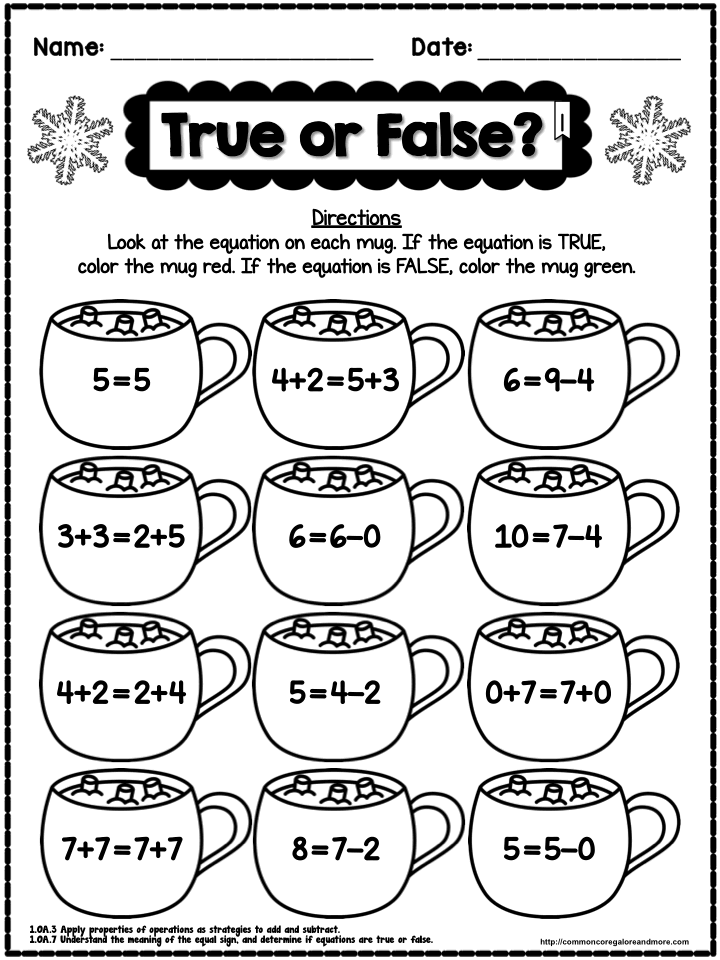
How to remember the graphic representation of numbers?
Very often it happens that the baby can count perfectly from 1 to 10, but he cannot find the number shown in the picture on his own. The graphic image of a figure for him is a complex abstract concept. The development of abstract thinking is not a simple process, as child psychologists believe. And without the help of adults, this is not enough.
Very often babies confuse numbers that are a little similar to each other, for example 6 and 9, 8 and 3, 4 and 7. And this problem should by no means be overlooked. The baby needs help to understand such complex, for his perception, graphic images. It will be much easier for a kid to remember a number if he can find its similarity with some object or animal: 2-swan, 8-points.
If mom can pick up interesting poems about numbers, then the memorization process will be even easier. How to help kids? The main thing is not to get angry with children if they do not grasp everything “on the fly”.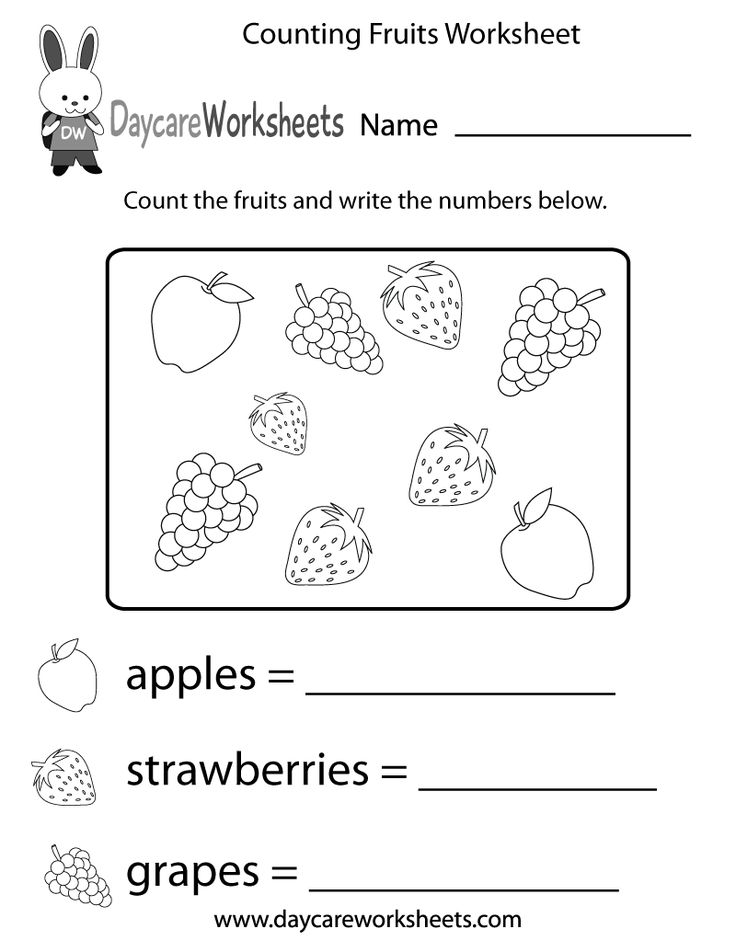 This is for you, adults, everything is easy and simple, but for children who have just begun to master numbers and counting, everything is very difficult. Any teacher or child psychologist in Moscow will confirm that the most effective way for children to memorize new material is to play math classes.
This is for you, adults, everything is easy and simple, but for children who have just begun to master numbers and counting, everything is very difficult. Any teacher or child psychologist in Moscow will confirm that the most effective way for children to memorize new material is to play math classes.
Find the number math game
For this game you will need:
drawn (printed) numbers on paper from 1 to 9
drawings similar to numbers, objects.
The kid looks at the drawing and then guesses what number is hidden in it. Then the mother shows the number 2 and asks the baby to find a picture similar to this number.
“What does the number look like”
Mom asks the child what number the glasses look like, and the baby should show the number 8.
Math game “Guess what number”?
Mom reads a poem, the child must name the number that was discussed in the poem, and then find it and show it.
Barely glides on the water,
Like a swan, number two.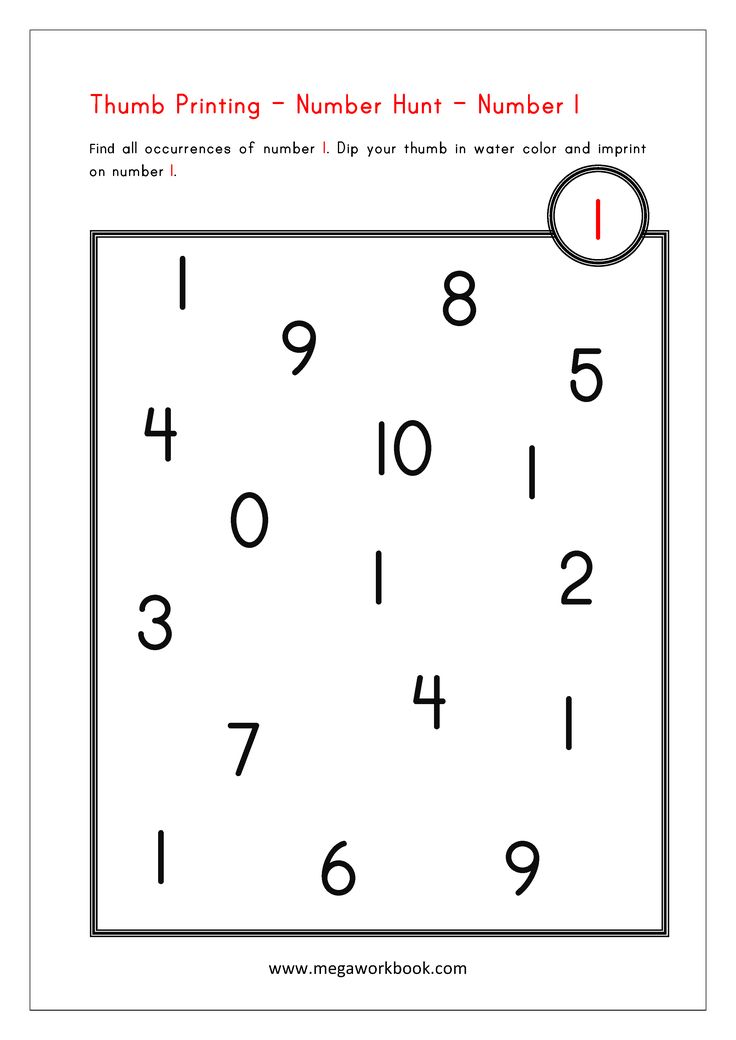
Arched her neck,
Drives the waves behind her.
***
Four mice on the mountain
Mixed up all the skis,
And hedgehogs, four brothers,
Helped them figure it out!
***
What a cherry, my friend,
Is the stalk bent up?
You try to eat it,
This cherry is a number ...
Mathematical game “Cardboard Numbers”
For this game, you will need to cut out numbers from cardboard in advance. The kid closes his eyes, takes one cardboard number and guesses by touch what kind of number it is.
Lost Numbers Math Game
Numbers from 1 to 9 are printed on cardboard. Then each of them is cut into two parts. The kid must restore them. If this task is too easy for him, he can complicate it by cutting the numbers into 3, 4 or 6 parts.
“What's on the back”
The baby lies on his stomach, and his mother draws a number on his back with her finger.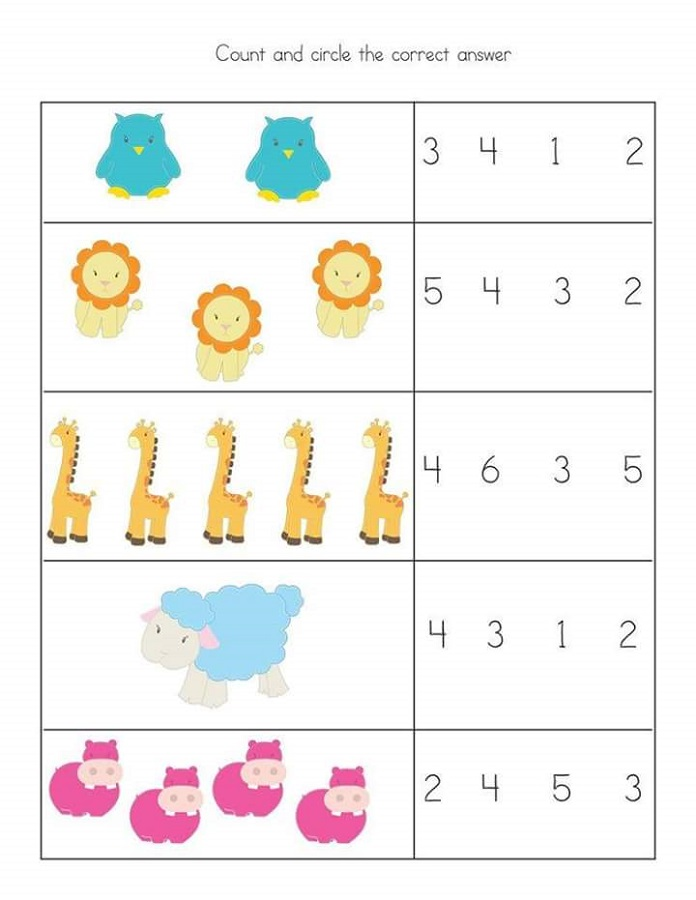 The baby must guess what this number is.
The baby must guess what this number is.
Preschool Math and Counting
Preschool and Toddler Math Fun
Math for young children is quite a difficult science that can be difficult to learn at school. In addition, not all children have a mathematical mindset, and not everyone has a natural craving for the exact sciences.
Therefore, developing a preschooler's interest in mathematics at an early age will greatly facilitate his schooling. After all, the modern school curriculum is quite rich and far from simple even for first-graders.
Mastering counting skills and the basics of mathematics at home in a playful and entertaining way for a preschooler will help him in the future to quickly and easily learn the complex issues of the school course.
Entertaining problems
How many ears do three mice have?
How many paws do two cubs have?
Seven brothers have one sister. How many sisters are there?
Dasha's grandmother has a granddaughter Masha, a cat Fluff and a dog Druzhok.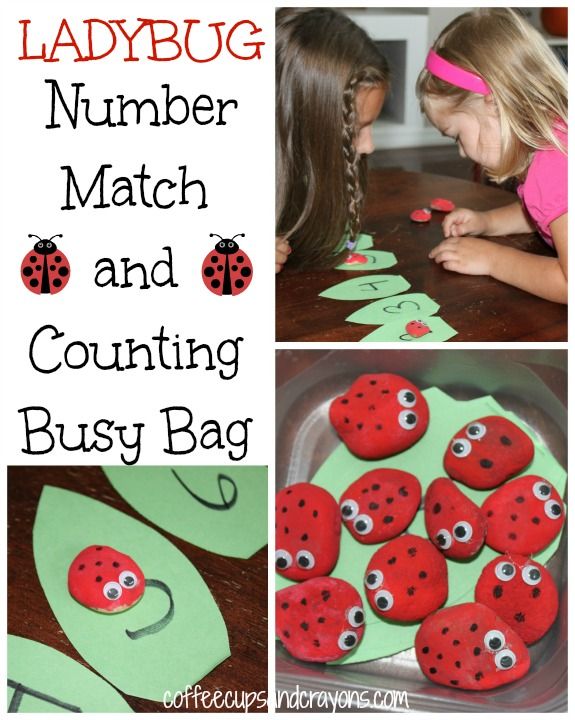 How many grandchildren does a grandmother have?
How many grandchildren does a grandmother have?
Birds were flying over the river: dove, pike, 2 tits, 2 swifts and 5 eels. How many birds? Answer soon!
7 candles burned. 2 candles extinguished. How many candles are left? (2. the rest burned down)
There are three apples in the basket. How to divide them among three children so that one apple remains in the basket? (give one apple along with the basket).
There are three thick branches on a birch, each thick branch has three thin branches. On each thin branch, one apple. How many apples are there? (Not at all - apples don't grow on a birch.)
Tasks in verse
Apples fell from a branch to the ground.
Wept, wept, tears shed
Tanya collected them in a basket.
As a gift to her friends she brought
Two Earrings, three Antoshka,
Katerina and Marina,
Olya, Sveta and Oksana,
The biggest one - to my mother.
Speak quickly,
How many Tanya's friends?
A star fell from the sky,
She ran to visit the children.
Two shout after her:
"Don't forget your friends!"
How many bright stars have disappeared,
Have fallen from the starry sky?
The holiday is coming soon. New Year,
Let's get up in a friendly round dance.
Let's sing a song loudly,
Congratulations to everyone on this day.
Let's prepare gifts for everyone,
This holiday is very bright.
Katya, Masha and Alenka
We will give a gift at Burenka,
Andryusha and Vityusha -
By car and pear.
Sasha will be happy with Petrushka
And a big colorful cracker.
Well, Tanya - Tanya -
Brown bear in a gray plush.
You, friends, count the guests
Call their names.
An old woman decided to bake cheesecakes.
I put down the dough and fired up the oven.
The old woman decided to bake cheesecakes,
And how many of them are needed - she completely forgot.
Two things - for granddaughter,
Two things - for grandfather,
Two things - for Tanya,
Neighbor's daughters…
I counted, counted, but lost my way,
But the stove was completely heated!
Help the old woman count the cheesecakes.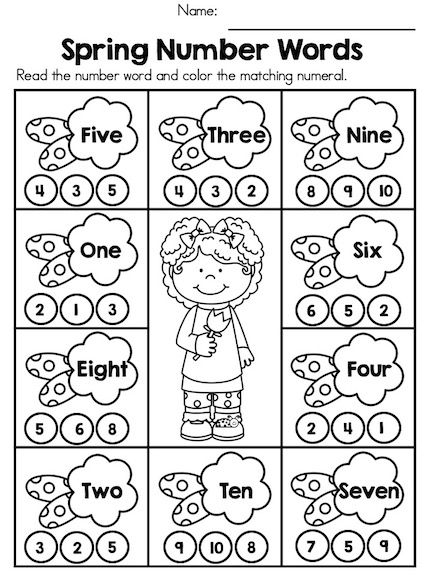
In the fish kingdom to the sturgeon
They come in the morning
Three young pike,
To clean his cheeks,
And four chebak
Wash their belly and sides.
Count, kids,
How many servants does a sturgeon have?
V. Kudryavtseva
Once upon a time
at the waistcoat
Three loops
and two cuffs.
If you count them together
Three and two, of course, five!
Just know,
what is the secret?
The vest has no cuffs!
G.Novitskaya
Six nuts mother-pig
Carried for children in a basket.
Hedgehog met a pig
And gave four more.
How many nuts did the pig
bring to the children in the basket?
Three hares, five hedgehogs
They go to kindergarten together.
We will ask you to count,
How many kids are in the garden?
Five pies lay in a bowl.
Two pies were taken by Lariska,
Another one was stolen by a pussy.
How much is left in the bowl?
Our cat has five kittens,
They sit side by side in a basket.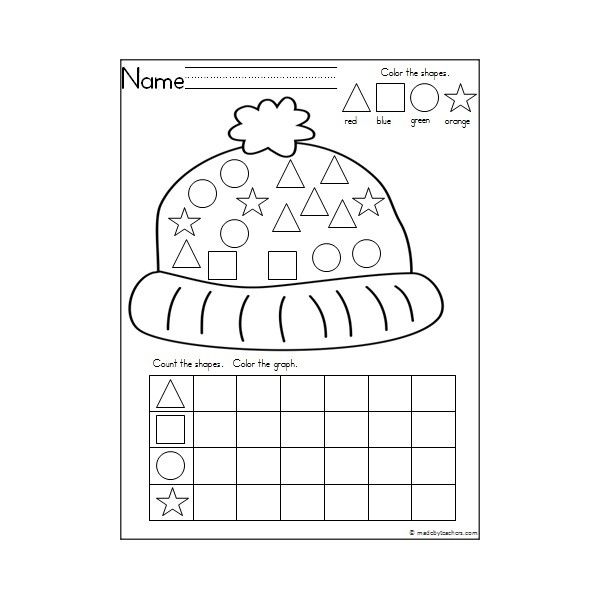
And the neighbor's cat has three!
So cute, look!
Help me count,
How much is three and five?
Seven geese set off.
The two decided to take a break.
How many of them are under the clouds?
Count yourself, children.
The apples in the garden are ripe,
We managed to taste them
Five ruddy, liquid ones,
Two with sourness.
How many are there?
A rooster flew up on the fence,
I met two more people there.
How many roosters have become?
Three chickens are standing
They are looking at the shells.
Two testicles in the nest
Lying at the mother hen.
Count the turns,
Answer quickly:
How many chickens will my mother hen have
?
Six funny cubs
They rush to the forest for raspberries
But one of them is tired,
Now find the answer:
How many bears are ahead?
Arranged by Andryushka
Two rows of toys.
Next to the monkey -
Teddy bear.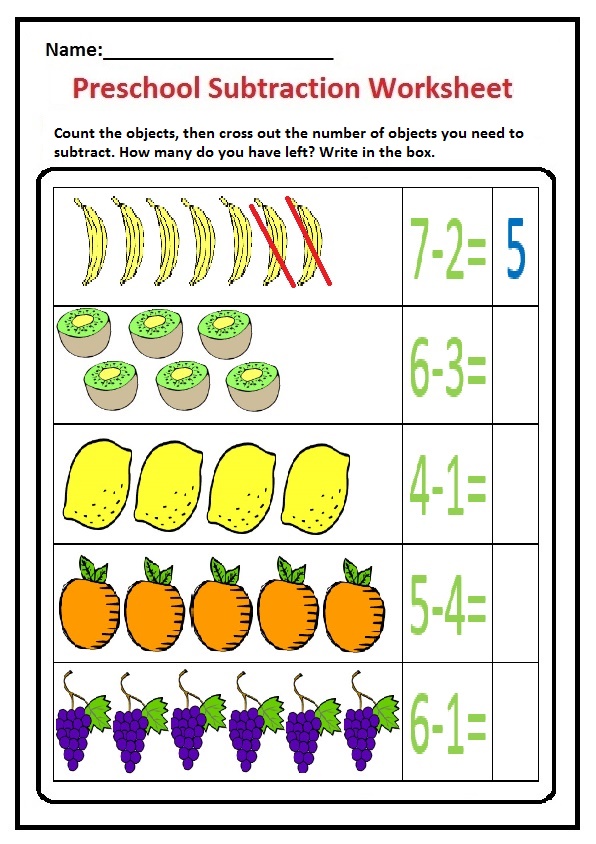
Together with the fox -
Bunny oblique.
Following them -
Hedgehog and frog.
How many toys
did Andryushka arrange?
Granny fox gives
Mittens to three grandchildren:
“This is for you, grandchildren,
mittens, two each.
Take care, do not lose,
How many, count!”
A seagull warmed up the kettle,
Invited nine seagulls,
“Come all for tea!”
How many seagulls, answer!
Squirrel dried mushrooms on the Christmas tree,
She sang a song and said:
“I don’t know troubles in winter,
Because there is a fungus:
White, camelina, two oil cans,
Three cheerful honey mushrooms.
The boletus is large,
This is what he is famous for <
And there are exactly six chanterelles.
Try to count them all!”
Mom and I were at the zoo,
We fed the animals from our hands all day.
Camel, zebra, kangaroo
And long-tailed fox.
Big gray elephant
I could hardly see.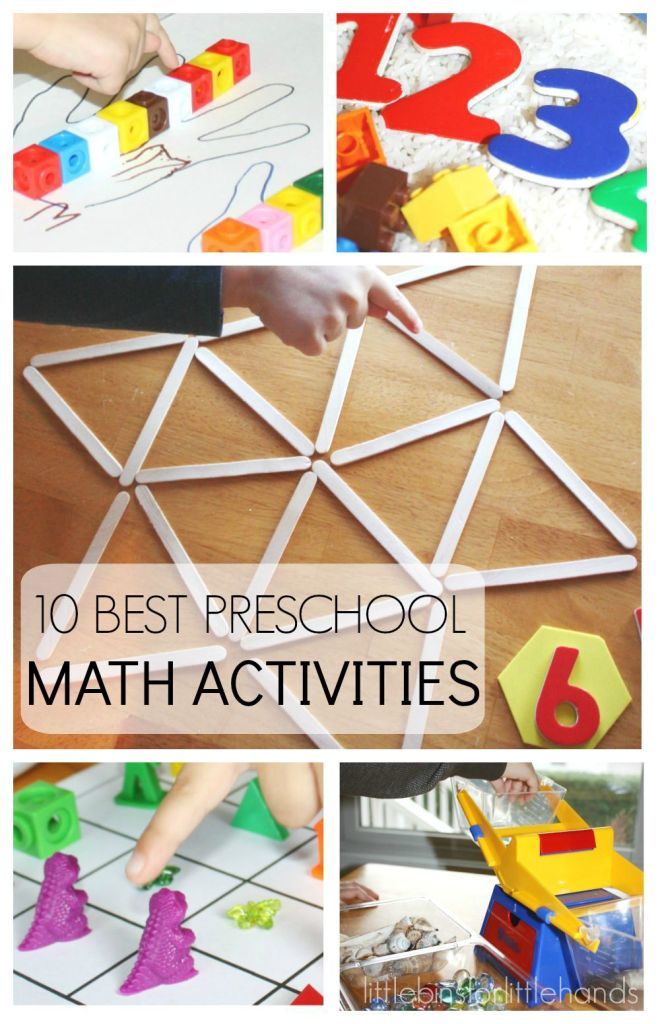
Tell me soon, friends,
What animals did I see?
And if you could count them,
You are simply a miracle! Well done!
Rain, pour more fun!
Do not be sorry for warm drops!
Five for Seryozhka, three for Antoshka,
Two for Valyusha and Katyusha.
And for mom and dad
Forty will not be enough.
Well, you friends count,
How many drops answer!
Along the path along the bushes
Eleven tails were walking.
I was also able to count,
That walked thirty feet.
It was going somewhere together
Roosters and pigs.
And now the question is this:
How many roosters were there?
And I would be glad to know
How many pigs were there?
Did you manage to find the answer?
Goodbye, hello everyone!
N.Razgovorov
Along the ravine
There was a cap,
Two kerchiefs,
Three baskets,
And behind them was stubbornly
Snow-white panama.
How many children were there in total?
Answer quickly!
One evening to the bear
Neighbors came to the cake:
Hedgehog, badger, raccoon, “oblique”,
A wolf with a cheating fox.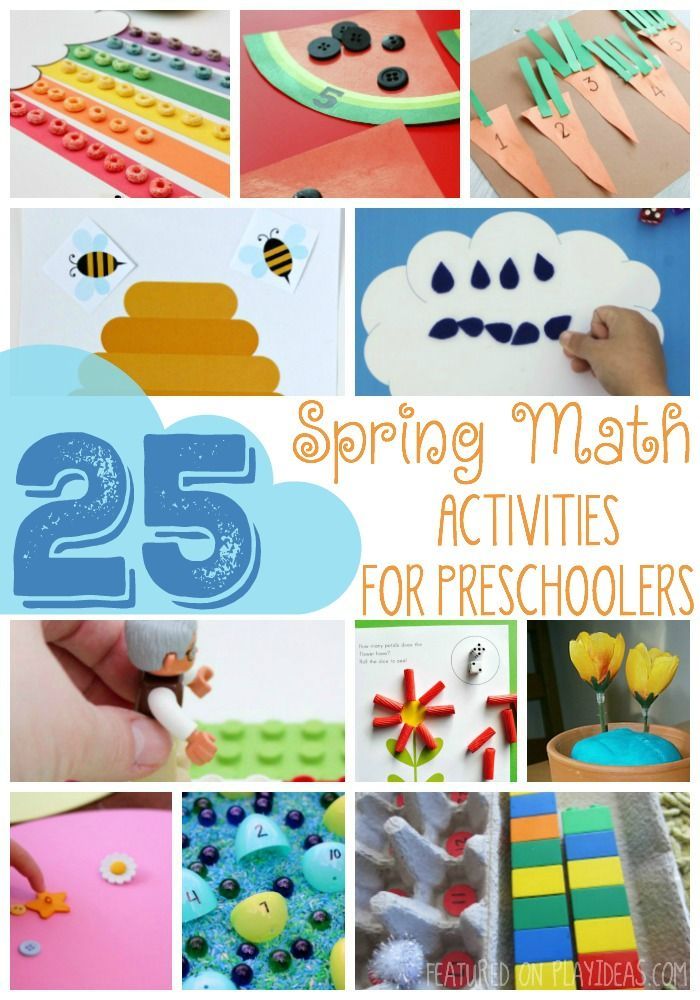
But the bear couldn't
Divide the pie.
The bear sweated from labor -
He didn't know how to count!
Help him quickly -
Count all the animals.
B. Zakhoder
Seven merry little pigs
Standing in a row at the trough.
Two went to bed to go to bed,
How many pigs have a trough?
Four goslings and two ducklings
Swimming in the lake, shouting loudly.
Well, count quickly -
How many babies are there in the water?
Good hedgehog at the market
Bought boots for the family.
Boots on the leg - for myself,
A little smaller - for my wife.
With buckles for my son,
With clasps for my daughter.
And he put everything in a bag.
How many legs does a hedgehog have in a family?
And how many boots did you buy?
Natasha has five flowers,
And Sasha gave her two more.
>Who can count here,
How much is two and five?
Mother goose brought
Six children to walk in the meadow.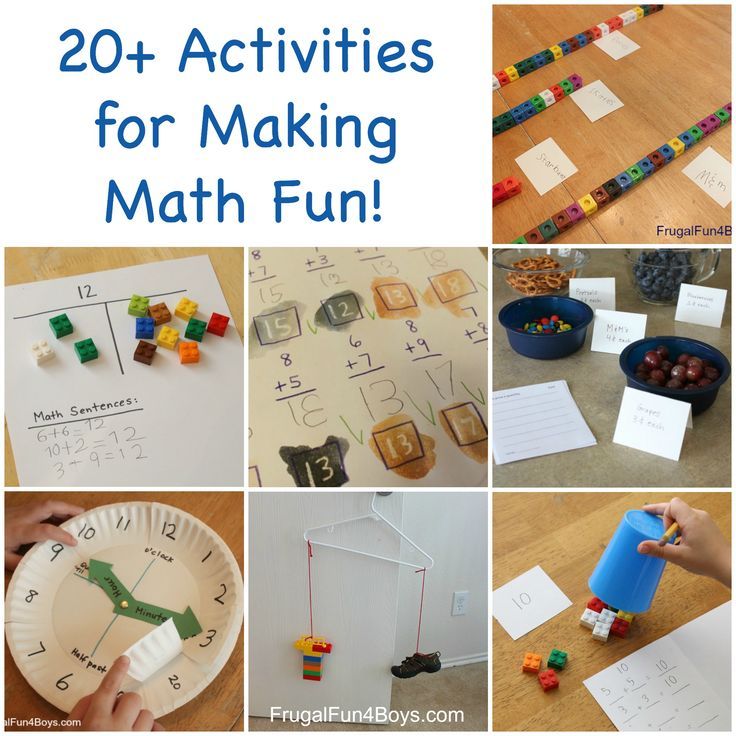
All goslings, like balls,
Three sons, how many daughters?
Four ripe pears
Swinging on a branch
Pavlusha took two pears,
And how many pears are left?
Grandson Shura good grandfather
Yesterday gave seven pieces of candy.
Grandson ate one candy.
How many pieces are left?
Mom embroidered the carpet.
Look at the pattern.
Two large cells
Each with three branches
Masha sat down on the bed,
Wants to count the branches.
No way
Who will help her?
Once to the hare for lunch
A friend-neighbor galloped up.
Bunnies sat on a stump
And ate five carrots each.
Who counts, guys, dexterous?
How many carrots have you eaten?
Under the bushes by the river
May beetles lived:
Daughter, son, father and mother.
Who can count them?
Seryozhka fell into the snow,
Alyoshka followed him.
And behind him is Irinka,
And behind her is Marinka.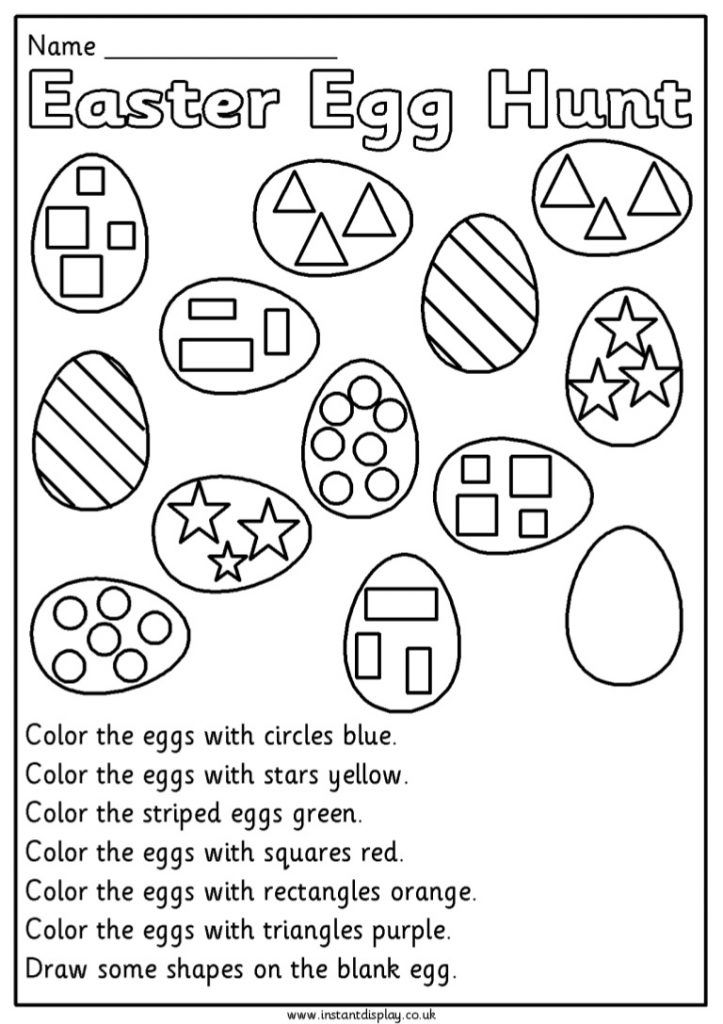
And then Ignat fell.
How many were all the guys?
Hedgehog gave the ducklings
Eight leather boots.
Which of the guys will answer,
How many ducklings were there?
How they stood in a circle under the Christmas tree
A hare, a squirrel and a badger,
A hedgehog and a raccoon stood up,
Elk, a wild boar, a fox and a cat.
And the bear was the last to stand,
How many animals are there? Answer!
Preschool Math and Counting Fun
Toddler Play Activities 5 to 5 (2yrs 6mths)
Make 5 shapes. For example: square, circle, rectangle, triangle, oval. Complete each shape in 5 colors. You will get 25 figures. Then you can expand the amount. Glue the shapes onto cardboard. It is advisable to stick with a sticky film. First lesson: ask the child to lay out all the red figures separately; separately - green, etc. Such an activity can be carried out for a very long time, constantly returning to it. Second lesson: offer to decompose into figures (separately - squares; separately - circles, etc.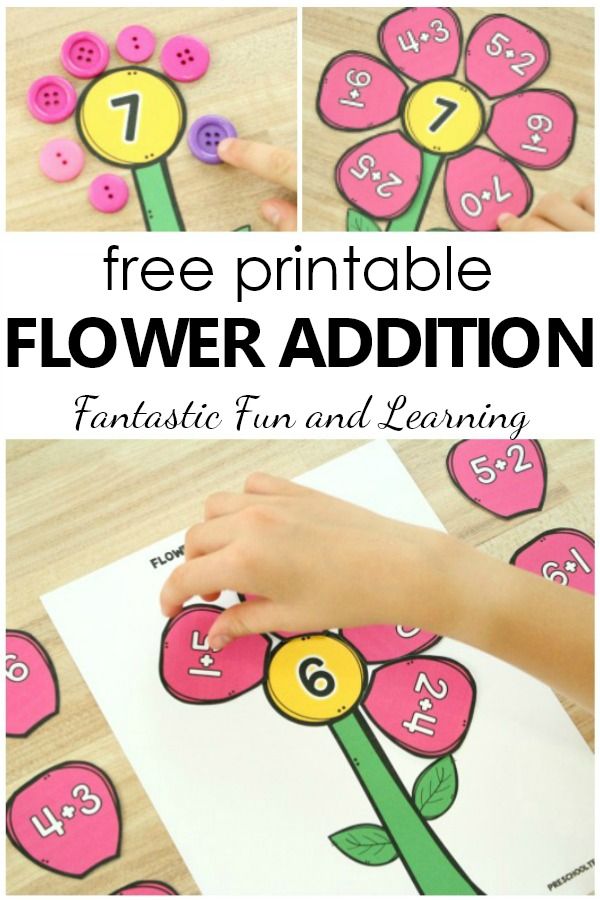 ) Third lesson: lay out the figures in this way: red figures are in front of the child, green ones are behind ...
) Third lesson: lay out the figures in this way: red figures are in front of the child, green ones are behind ...
Household account (1 year 6 months)
Count everything together with the child. We note that, as in most of these activities, you should not start with prodding like “Well, let's count the steps with you!”, But you yourself should count for your own pleasure. At the beginning, your goal is to demonstrate to the child the possibilities of oral counting, to arouse interest in him.
- How many steps.
- How many apples did you buy.
- How many forks are on the table. etc.
Cards (1 year 6 months)
Make cards with numbers (up to 10 at the beginning). Cover them with foil. Learn to put them in order.
Studying zero (2 years)
You can enter zero using the following questions:
- How many cows are in your pocket?
- How many crocodiles do we have at home? etc.
- Put 5 cubes on the table. Take one at a time and ask how much is left.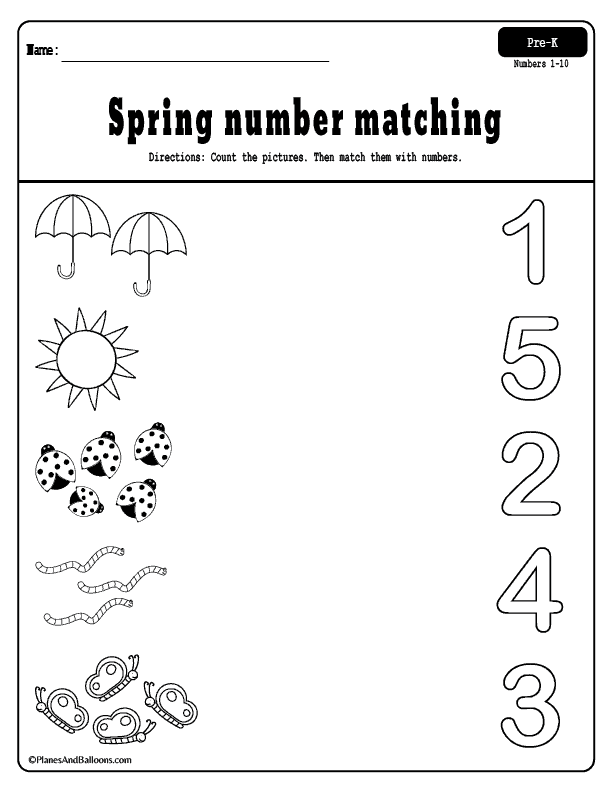 First, 1 cube (4 will remain), then 1 more, etc. Until 0 remains.
First, 1 cube (4 will remain), then 1 more, etc. Until 0 remains.
Count using verses (1 year 6 months)
Leonid Yakhnin. "Bench". (Draw multi-colored benches or lay them out of geometric shapes and count.)
| In our park on the alley Multi-colored benches: On a brown bench Two noisy families. On another bench, white, Only the girl was sitting. And near the red bench A big, dangerous bulldog lay down. Grandmother is sitting on blue, On her knees is a cat in a basket. | Two workers took a rail - Repairing a yellow bench. We will sit down with you On the blue bench. And on the most distant, On a green bench - Carved maple leaves. Everyone had enough for a bench In our park on an alley. |
Vladimir Orlov. “I am counting” (After reading the poem, invite the child to lay out figures that look like animals or any geometric shapes, then count how many animals live in the zoo)
| Everything I see in the yard Everything I see on the way I can, I can Count to ten. 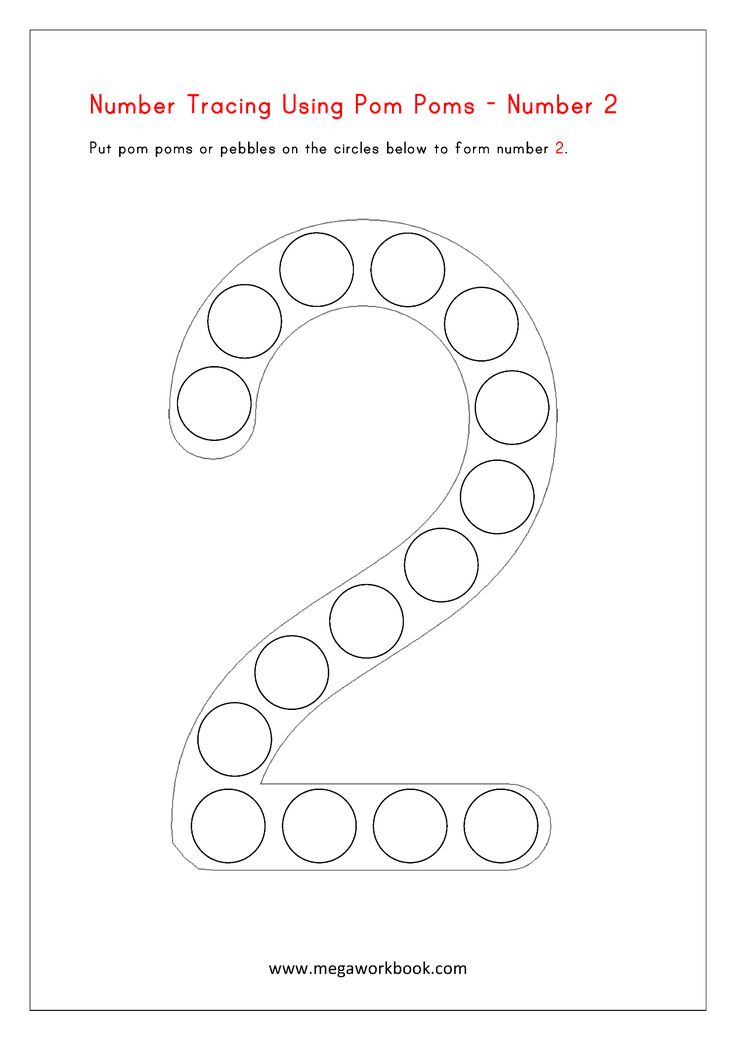 I'm going to the zoo with my mother And I'm counting everyone. A porcupine is running, This is it. An owl cleans its feathers, This is two. The third was a wolverine, And the fourth was a turtle. | The gray wolf went to bed, It's five. A parrot in dense foliage, He is the sixth. Here is the calf next to the elk, This will be seven and eight. Nine is a hippopotamus. Mouth like a grandmother's chest of drawers. A shaggy lion walks in a cage, He is the last, he is the tenth. I can't count further - We must start again! |
From the book “Tell poems with your hands” (based on English folklore, translated by V. Egorov)
“Kittens”
(Ask the Child to prepare five geometric figures. While reading the poem, the Child should remove one figure at a time. How many kittens are left in the room?)
Here are five kittens.
One left - and he is gone.
Well, he doesn't exist - and he doesn't. There are four kittens left.
Here are four kittens. One at night sometimes
He climbed a tree - there were three kittens left.
But somewhere a little mouse squeaked thinly.
The kitten heard - there are two kittens left.
One of them with a ball disappeared in the doorway without a trace,
And the smartest one is the one left, the last one -
Milk from a bowl began to lap for five.
Curling or stroking fingers (2.5 years)
Who has more. This game can be played with two or three people. To play, you need a cube with dots. Buttons, cones, nuts, etc. can be used as counting material.
Place buttons (nuts) in a vase or box. Now take turns rolling the dice. What number falls out, so many are taken from the vase of objects. When the vase is empty, count who has more. Find a pair. Put 4-5 different toys in front of the child. (a cube, a ball, a matryoshka, a bunny…)
Put about the same number of toys aside. Invite your child to find 2 identical toys:
Invite your child to find 2 identical toys:
1) by color;
2) according to the form;
3) by size (value).
If the child chooses the wrong toy, place two toys next to each other. Ask: “Is it the same color?” “Is the cube also round?”
Option: The same task, but with pictures.
You should alternate classes with objects and pictures. What has changed? Option 1: develop visual memory.
Place 4-6 toys in front of the child. Count: the first is a Bear, the second is a bunny, etc. Then ask the baby to turn away and swap the two toys. The kid must guess what has changed. Option 2: Further, closer.
Put a house in front of the baby and 3 toys at different distances from it. Determine who is closer to the house, who is farther. Then ask the child to turn away and change the position of 2 toys. “Now who is closer to the house? Who is farther from the house? “Option 3: Above-below.
Place 3-4 cubes of different heights on the table with different toys on them.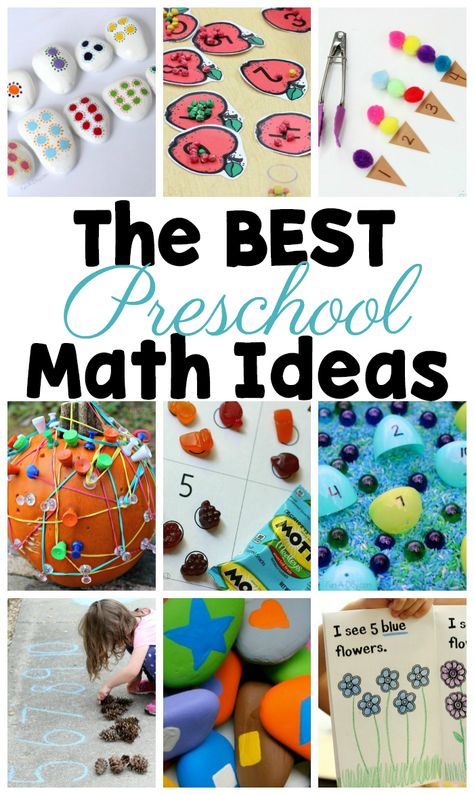 Find out which toy is higher than all, which is lower. Then ask the child to turn away and swap the two toys. “Which toy is the tallest now?”
Find out which toy is higher than all, which is lower. Then ask the child to turn away and swap the two toys. “Which toy is the tallest now?”
| Sing along, sing along: Ten birds flock. This bird is a nightingale, This bird is a sparrow. This bird is an owl, Sleepy little head. This bird is a waxwing, | This bird is a corncrake, This bird is a starling, A gray feather. This one is a finch. This one is a swift. This one is a cheerful siskin. Well, this one is an angry eagle. Birds, birds go home! |
Toddler math game
Cut out sets of animal figures or toys, such as dolls, nesting dolls, from construction paper. All figures in the set must be of different sizes and colors. On a sheet of paper, draw houses, also of different sizes.
The bears are going for a walk
Ask the child to find the biggest bear and put it down first.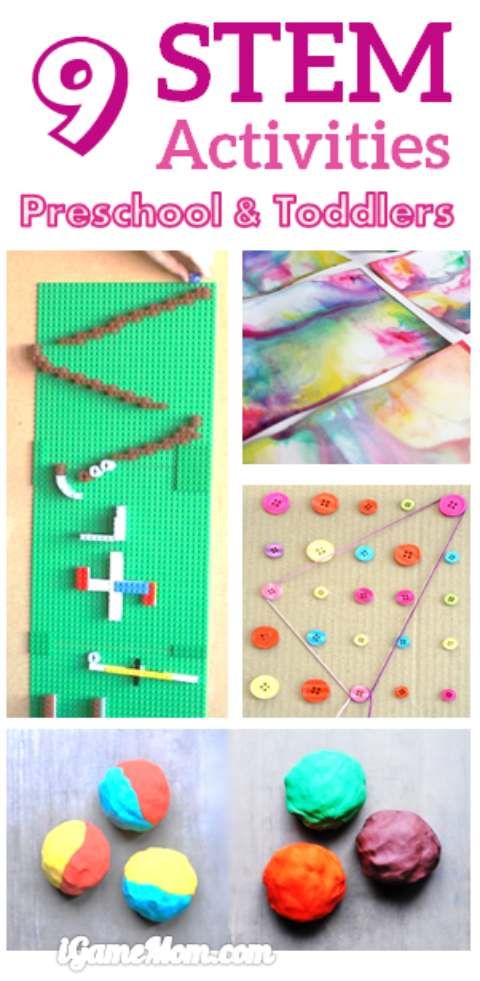 (underline this concept with intonation: “first”), then find the smallest one. And, finally, we will build according to the growth of all the others. If the child is at a loss, offer to attach one figure to another. When all the figures are lined up in height, come up with names for each character with the baby. Then ask: “who is our second?” Phil. Who is our last, sixth?” - "Motya".
(underline this concept with intonation: “first”), then find the smallest one. And, finally, we will build according to the growth of all the others. If the child is at a loss, offer to attach one figure to another. When all the figures are lined up in height, come up with names for each character with the baby. Then ask: “who is our second?” Phil. Who is our last, sixth?” - "Motya".
Find a house for each bear
The meaning of the game is the same - arrange objects according to their height and practice counting. First, we arrange the figures according to their height, and then we select the houses for them by size.
Looking for a toy
Take any toy, for example, a teddy bear, tell him that he is looking for a nesting doll that is in front of the blue one (after green, between yellow and red, to the right of blue, to the left of purple). Mastering the concepts of “before”, “after”, “between”, “right”, “left” will help your child navigate the world around him.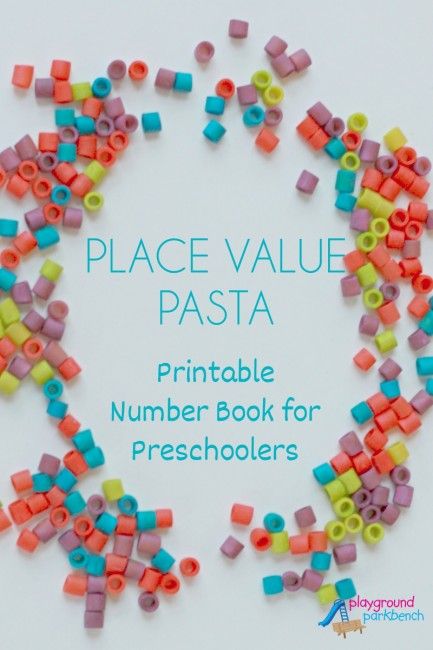
Looking for a toy 2
It is worth preparing for this game in advance - put the images of nesting dolls on a large sheet of paper and circle them. First, you can make drawings in one row, and when the baby can easily cope with this task, place the contours on the sheet “in loose”. Tell the baby that each nesting doll has its own place, show the contours of the nesting dolls. But one day, after a walk, the nesting dolls mixed up their places. Invite your child to help them. This game develops the eye well, develops the habit of bringing the work started to the end.
Make no mistake!
Helps to master the sequence of natural numbers, exercises in forward and backward counting. The game uses a ball. Children stand in a semicircle. Before starting, they agree in what order (forward or reverse) they will count. Then they throw the ball and call the number. The one who caught the ball continues to count further. The game is played at a fast pace.
Find a toy
The driver leaves the room.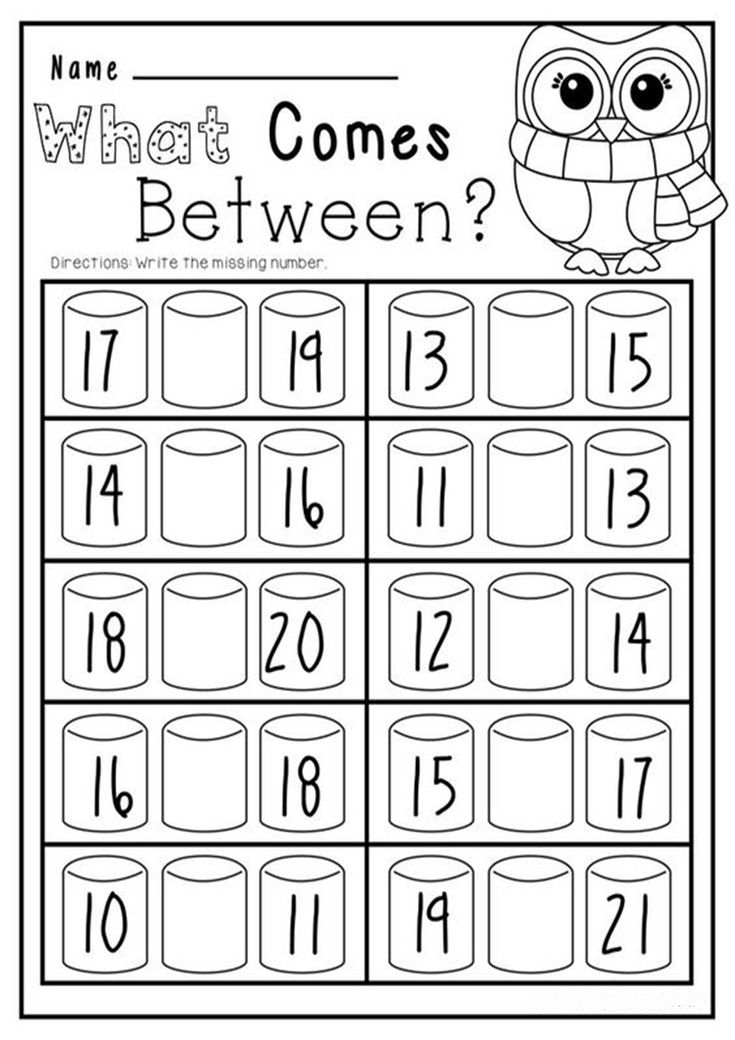 At this time, hide the toy. Then the child is explained where to find it: “You need to stand in front of the table, and go 3 steps forward, two steps to the left, etc. ". Children complete the task, find a toy. When the children begin to navigate well, the tasks can be complicated - to give not a description of the location of the toy, but a diagram. According to the scheme, children must determine where the object is hidden.
At this time, hide the toy. Then the child is explained where to find it: “You need to stand in front of the table, and go 3 steps forward, two steps to the left, etc. ". Children complete the task, find a toy. When the children begin to navigate well, the tasks can be complicated - to give not a description of the location of the toy, but a diagram. According to the scheme, children must determine where the object is hidden.
Getting to know the numbers
To play, you will need counting cards with pictures. (you can download zip. above), numbers (on cards or any other), chips.
It is best to play together. Lay out all the cards face up. Put the numbers in the box. Take turns taking the numbers out of the box. The task is to find cards with the corresponding number of items. A chip is placed on the found card. The number is put back in the box.
When the game is over, count who has the most chips. It’s better to do it like this - put the chip in two rows and compare whose row is longer.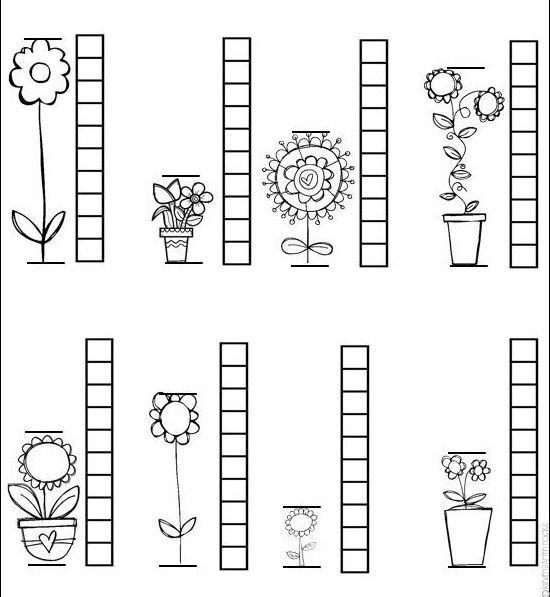
Guessing game
Yogurt boxes or plastic cups can be used for this game. Write or stick a number on each cup. Pick up some toy that will fit in the cup.
This game is played by two people. Place cups upside down. One player turns away, and the second at this time hides the toy in one of the cups. The first player must guess under which cup the toy is hidden, and the second must give him hints. For example: the toy is hidden under the cup with the number 5. The player asks: “Under the second?”. - "No more".
Who has the most
This game can be played with two or three people. To play, you need a cube with dots. Buttons, cones, nuts, etc. can be used as counting material.
Place buttons (nuts) in a vase or box. Now take turns rolling the dice. What number falls out, so many are taken from the vase of objects. When the vase is empty, count who has more.
Logic puzzles for preschoolers
Giraffe, crocodile and hippo
lived in different houses.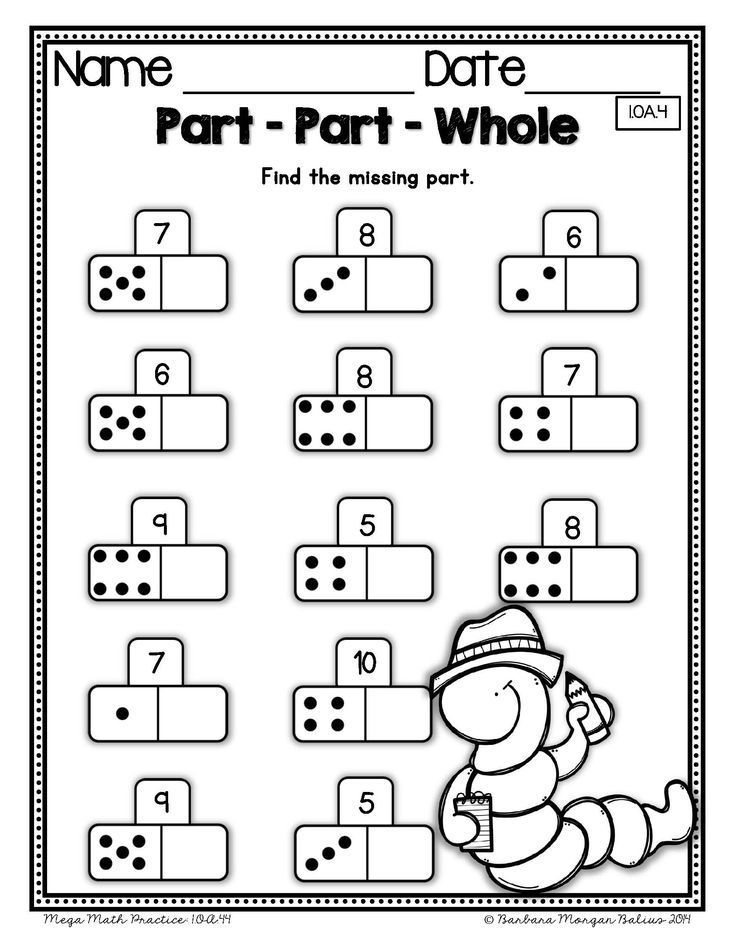
The giraffe did not live in a red house
or in a blue house.
The crocodile did not live in the red
and not in the orange house.
Guess what houses the animals lived in?Three fish swam
in different aquariums.
The red fish swam not in a round
and not in a rectangular aquarium.
Goldfish - not in a square
and not in a round.
In which aquarium did the green fish swim? Once upon a time there were three girls:
Tanya, Lena and Dasha.
Tanya is taller than Lena, Lena is taller than Dasha.
Which of the girls is the tallest,
and who is the shortest?
Which one of them is called?Misha has three carts of different colors:
Red, yellow and blue.
Misha also has three toys: a tumbler, a pyramid and a spinning top.
In the red cart he will carry neither a top nor a pyramid.
In yellow - not a top and not a tumbler.
What will Mishka be lucky in each of the carts?The mouse is neither in the first nor in the last carriage.
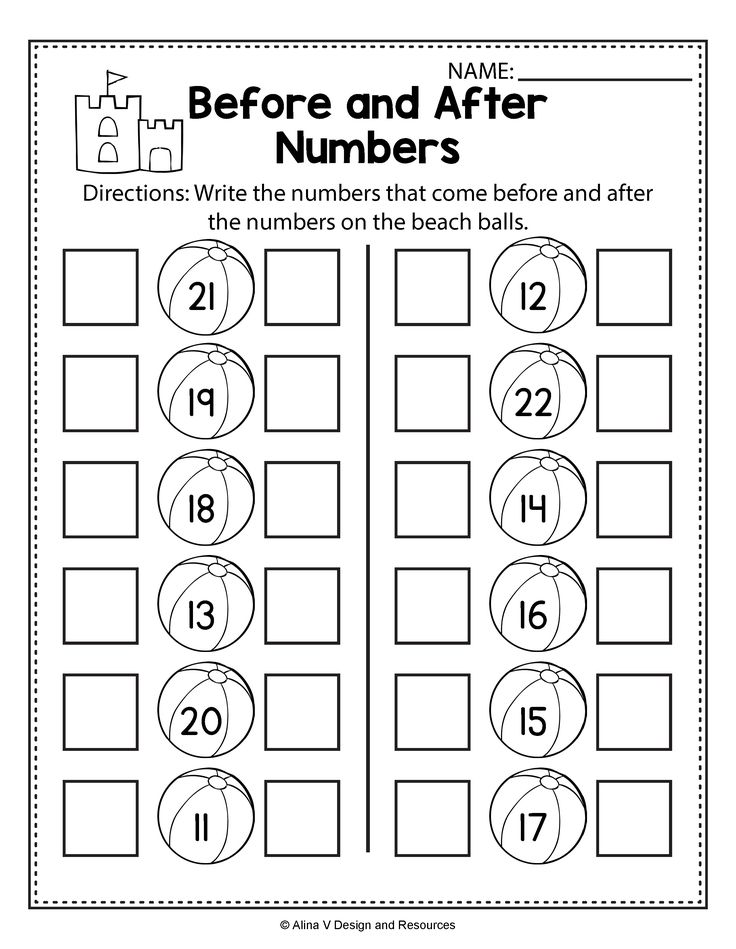
The chicken is not in the middle and not in the last carriage.
In which carriages do the mouse and the chicken travel?The dragonfly does not sit on a flower or on a leaf.
The grasshopper does not sit on a fungus and not on a flower.
The ladybug does not sit on a leaf or on a fungus. Who is sitting on what? (better to draw everything)Alyosha, Sasha and Misha live on different floors.
Alyosha lives neither on the top floor nor on the bottom one.
Sasha doesn't live on the middle floor or on the bottom floor.
On which floor does each of the boys live?Anya, Yulia and Olya's mother bought fabrics for dresses.
Anya is neither green nor red.
Yulia - not green and not yellow.
Ole - not yellow and not red.
Which fabric for which girl?There are different fruits in three plates.
Bananas are not in a blue or orange plate.
Oranges not in a blue and pink plate.
Which plate contains plums?
What about bananas and oranges?The flower does not grow under the tree,
The fungus does not grow under the birch.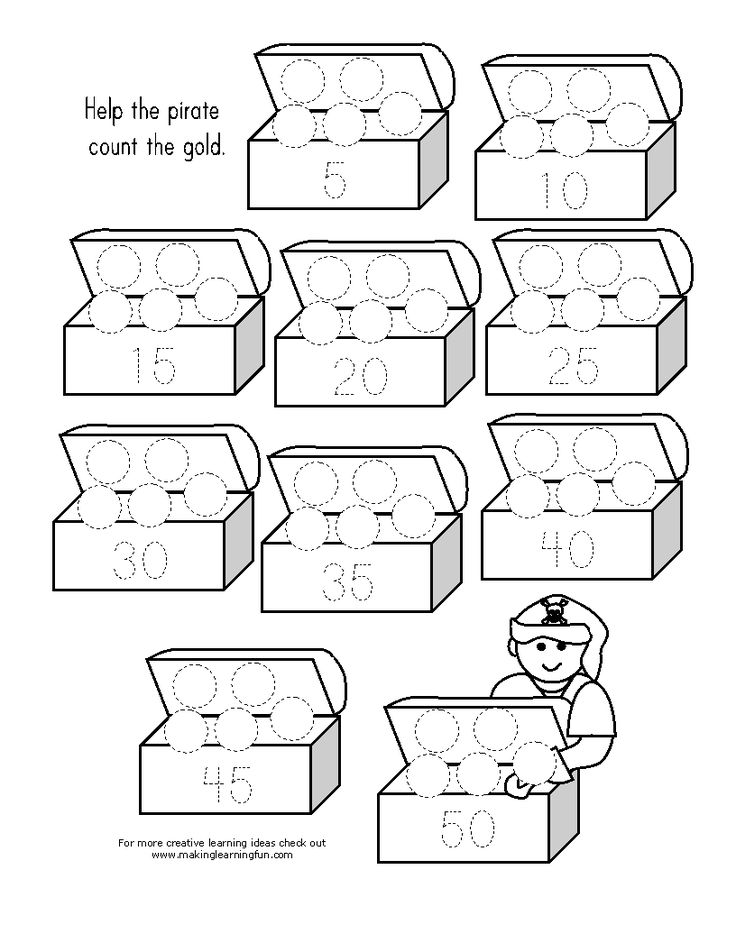
What grows under the tree,
What grows under the birch?Anton and Denis decided to play.
One with cubes and one with cars.
Anton did not take the typewriter.
What did Anton and Denis play with?Vika and Katya decided to paint.
One girl drew with paints,
and the other with pencils.
What did Katya start to draw with?Red and Black clowns performed with a ball and a ball.
The red-haired clown did not perform with a ball,
A black clown did not perform with a ball.
What subjects did the Red and Black clowns perform with?Lisa and Petya went to the forest to pick mushrooms and berries.
Liza did not pick mushrooms. What did Petya collect?Two cars were driving on a wide and a narrow road.
The truck was not driving on a narrow road.
Which road was the car driving on?
And the truck?Learning to tell time by the clock
First, let's make a fake watch.
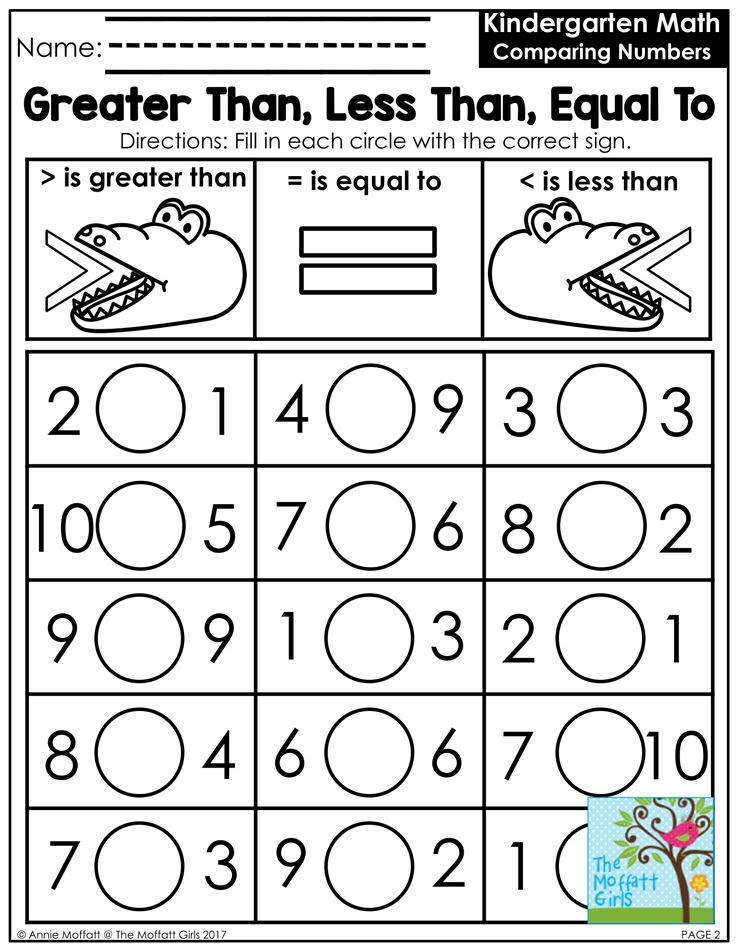
Perfectly made from a cake box, the cake can be eaten. The difficulty is different: many years and many children have led us to the idea that ordinary wall clocks are an unnecessary study load and these activities need to be simplified and done in stages.First, we make a regular dial, but we leave the minute dashes bare, without defining the number of minutes, and we also abolish the minute hand.
Time is divided into:
- hour,
- just over an hour,
- half past one (or one and a half),
- about two,
- two,
- is slightly more than two, and so on.
When this part is over and the child is oriented clockwise with complete confidence, we proceed to work with the minute hand within one hour (60 minutes), but this can also be done in parallel. And do not rush to combine the arrows!
Work with the hour hand can be started in 3.5-4 years, and we see no particular reason to hurry.
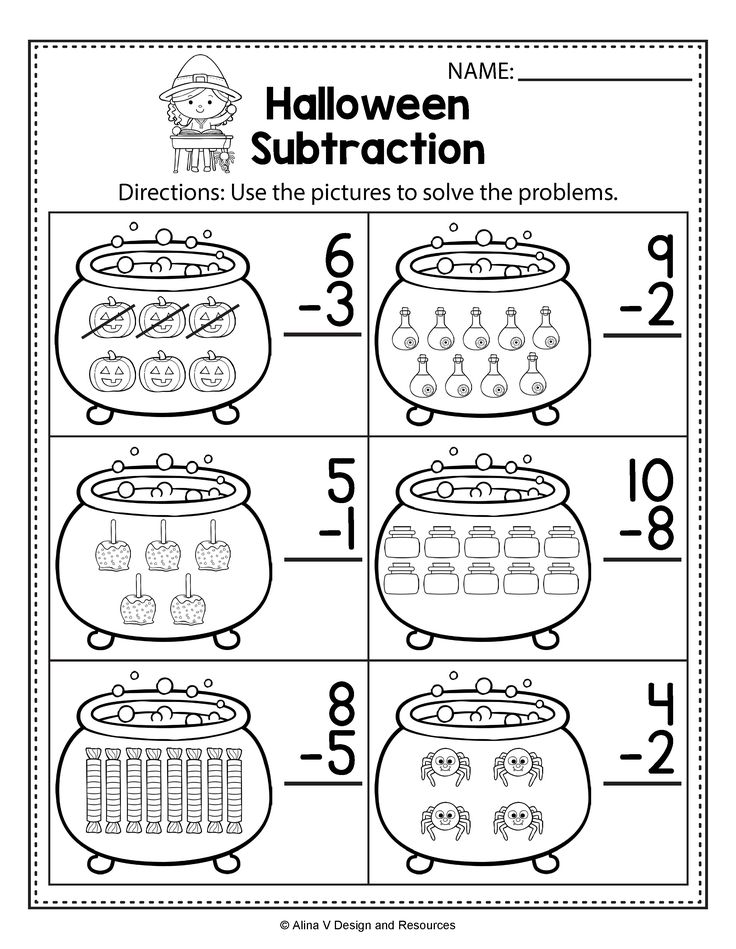
Most of the first-graders are not able to tell the time by the clock with hands. This is a medical fact.
Very often it seems that a child of six or seven years old is about to learn to tell time accurately, but time passes and confusion continues.
It seems to us that this problem is easily explained by the fact that what to connect in the minds of two superimposed dials - hour and minute - for a child's mind is a colossal load , and a child should not be taught to determine the time by such a clock.
Throw away the minute hand and the dial division into minutes. There are 12 digits left and dividing the time by, for example, four, a little more than four, half past five, about five, five, a little more than five. There is plenty of such a rough division of time for a child, and this can be taught starting from four to four and a half years. Let it take a YEAR. Don't force things.
Only when the child perfectly feels the position of the hour hand, very slowly, minute by minute, enter the second parallel dial.
Take your time with quarters (Quarter and Quarter), take your time with five minutes, ten minutes, etc. This should be moved to the next, separate stage. Let your wall clock in the room or in the kitchen have only an hour hand for a long time, but the numbers can be changed, Roman numerals can be entered almost immediately.
And if we have long been giving all the concepts and it seems. that victory is near, is it right to go further or still return to the clock face?
We think that the introduction for some time of a dial with only an hour hand will create a correct sense of time in the child and improve his relationship with the clock.
Mosaic of buttons - educational game for children
At the age of 6, innervation occurs in children (supply of organs and tissues with nerves, which ensures their connection with the central nervous system). The upper phalanges of the fingers (pads) become sensitive.
Why buttons?
Different texture, many colors, shades, sizes and shapes.
There is no specified form for the composition. The child develops a sense of space and a sense of color. Button exercises help develop fine motor skills.
You can buy these buttons at any store, and for the first lessons, use the stocks in your home. Surely your closets store clothes that you don't wear. Argue with her buttons and you can start classes.But the main idea of the “button mosaic” is that by school the child has formed images of the sets 2, 3, 4, 5. To do this, even before the age of six, the child needs to play enough to fix the images of the sets through objects. This should be done only through the real world, not informationally (cartoons and books), but through sensory perception: tactility, tangibility, smell, etc. Interaction with an object (a kitten, a chair, a toy car, etc.) is much more emotional, so the images are brighter and are fixed clearly.
How many eyes? Two. And the ear? Two. Show two fingers.
And the cat's paws? Four.
In no case should you count, just call - four.
When the images are fixed, i.e. the child easily shows 2,3,4 without counting, you can proceed to operate with sets on the fingers or on any other counting material. How else can you show four? Two and two. There are five fingers on the hand. And if you break it into two groups, into three? How else can you show three and three? It's five and one. And the more options are played, the more clearly the images of the sets are fixed in the child. How can you divide 10? Again looking for different options.
Large bones, nuts, stones, etc. can be used. An ideal occupation is to sort out cereals by 3 grains, by 2, by 4. Quite semantic and useful activity. You can also divide a large amount of something into sets. A dozen is enough for the school to easily give an oral count of four-digit numbers (without resorting to counting in a column), and the multiplication table - you don’t have to cram.
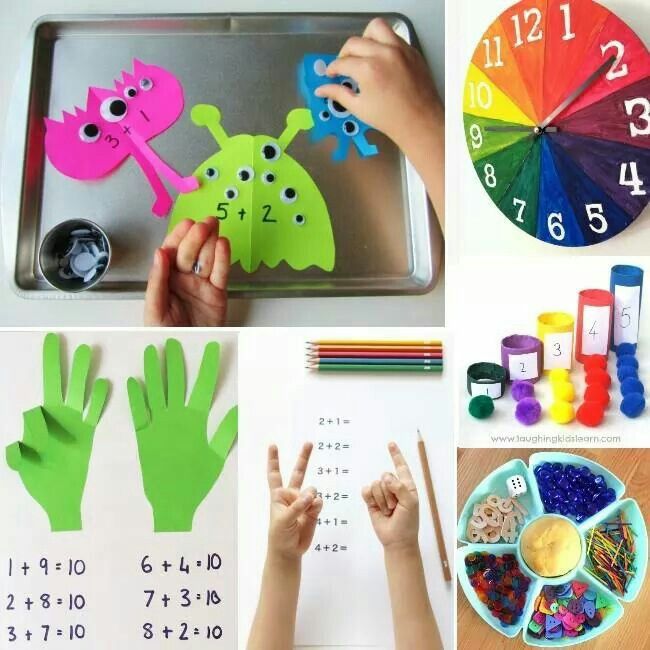
Learn more

